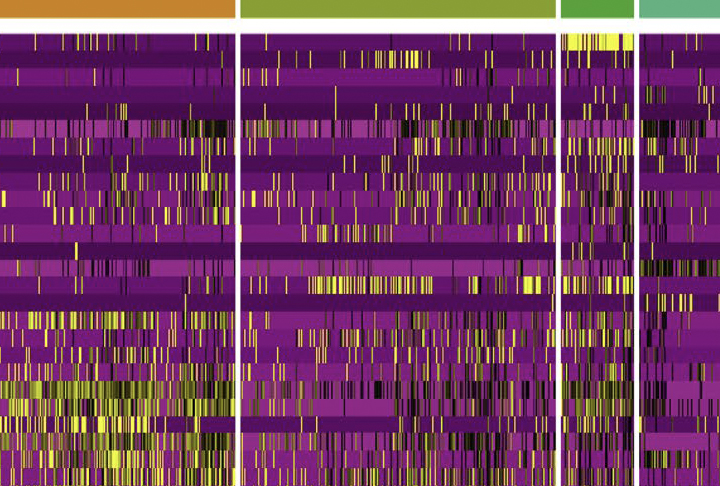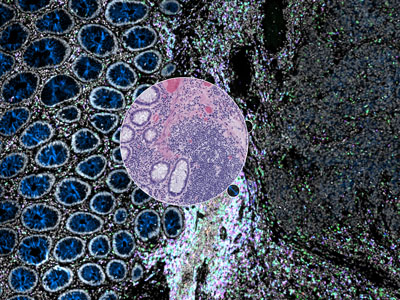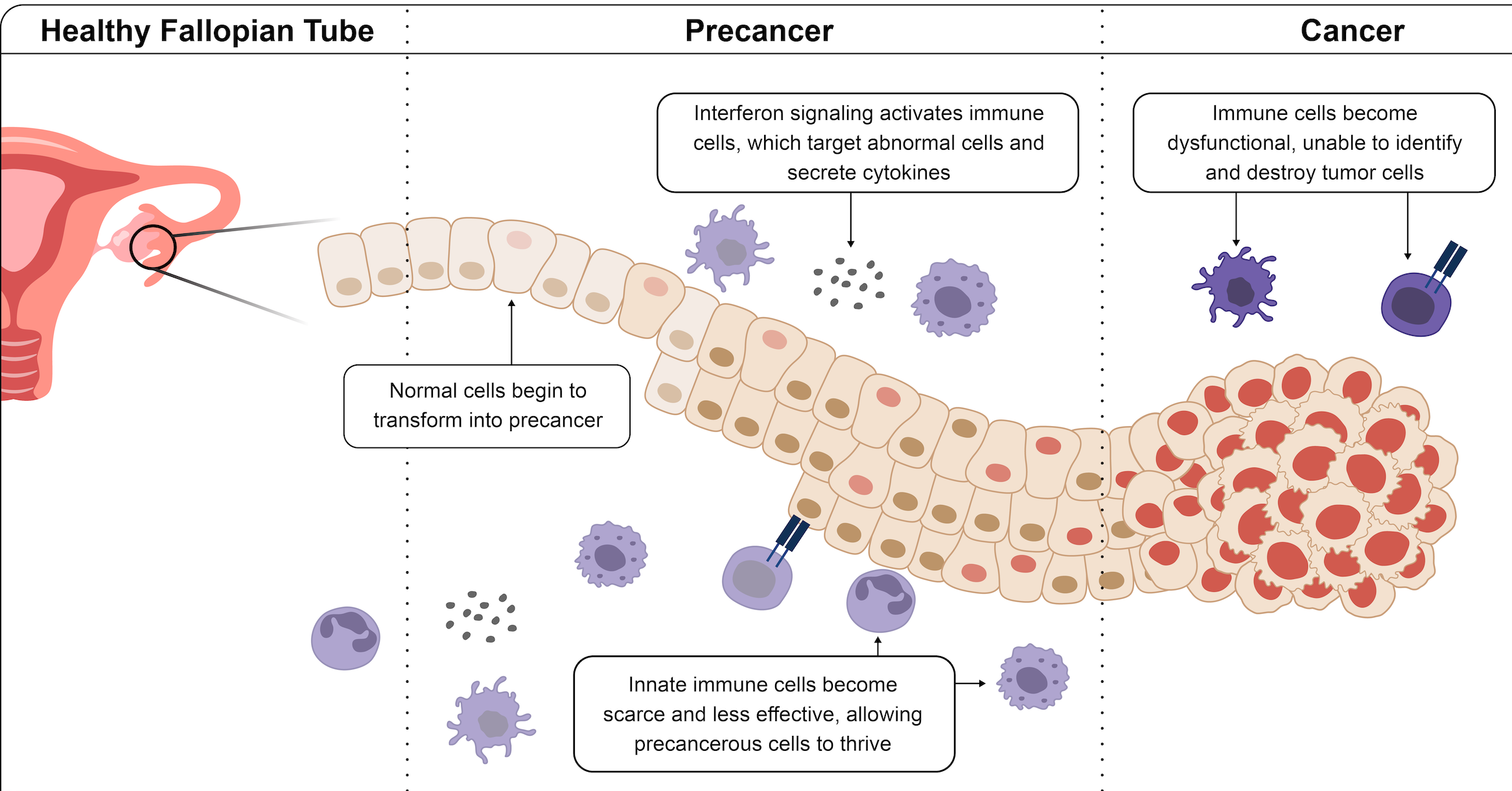Related Publications
2576724
IXMHRBF6
inflammation
1
apa-cv
50
date
desc
1
1
4109
https://labsyspharm.org/wp-content/plugins/zotpress/
%7B%22status%22%3A%22success%22%2C%22updateneeded%22%3Afalse%2C%22instance%22%3Afalse%2C%22meta%22%3A%7B%22request_last%22%3A0%2C%22request_next%22%3A0%2C%22used_cache%22%3Atrue%7D%2C%22data%22%3A%5B%7B%22key%22%3A%22K689HZJI%22%2C%22library%22%3A%7B%22id%22%3A2576724%7D%2C%22meta%22%3A%7B%22lastModifiedByUser%22%3A%7B%22id%22%3A9036456%2C%22username%22%3A%22jtefft%22%2C%22name%22%3A%22%22%2C%22links%22%3A%7B%22alternate%22%3A%7B%22href%22%3A%22https%3A%5C%2F%5C%2Fwww.zotero.org%5C%2Fjtefft%22%2C%22type%22%3A%22text%5C%2Fhtml%22%7D%7D%7D%2C%22creatorSummary%22%3A%22Jain%20et%20al.%22%2C%22parsedDate%22%3A%222025-03-15%22%2C%22numChildren%22%3A1%7D%2C%22bib%22%3A%22%3Cdiv%20class%3D%5C%22csl-bib-body%5C%22%20style%3D%5C%22line-height%3A%202%3B%20padding-left%3A%201em%3B%20text-indent%3A-1em%3B%5C%22%3E%5Cn%20%20%3Cdiv%20class%3D%5C%22csl-entry%5C%22%3EJain%2C%20N.%2C%20Ogbonna%2C%20E.%20C.%2C%20Maliga%2C%20Z.%2C%20Jacobson%2C%20C.%2C%20Zhang%2C%20L.%2C%20Shih%2C%20A.%2C%20Rosenberg%2C%20J.%2C%20Kalam%2C%20H.%2C%20Gagn%26%23xE9%3B%2C%20A.%2C%20Solomon%2C%20I.%20H.%2C%20Santagata%2C%20S.%2C%20Sorger%2C%20P.%20K.%2C%20Aldridge%2C%20B.%20B.%2C%20%26amp%3B%20Martinot%2C%20A.%20J.%20%282025%29.%20%3Ci%3EMultiomic%20analysis%20identifies%20suppressive%20myeloid%20cell%20populations%20in%20human%20TB%20granulomas%3C%5C%2Fi%3E%20%5BPreprint%5D.%20bioRxiv.%20%3Ca%20class%3D%27zp-DOIURL%27%20target%3D%27_blank%27%20href%3D%27https%3A%5C%2F%5C%2Fdoi.org%5C%2F10.1101%5C%2F2025.03.10.642376%27%3Ehttps%3A%5C%2F%5C%2Fdoi.org%5C%2F10.1101%5C%2F2025.03.10.642376%3C%5C%2Fa%3E%3C%5C%2Fdiv%3E%5Cn%3C%5C%2Fdiv%3E%22%2C%22data%22%3A%7B%22itemType%22%3A%22preprint%22%2C%22title%22%3A%22Multiomic%20analysis%20identifies%20suppressive%20myeloid%20cell%20populations%20in%20human%20TB%20granulomas%22%2C%22creators%22%3A%5B%7B%22creatorType%22%3A%22author%22%2C%22firstName%22%3A%22Neharika%22%2C%22lastName%22%3A%22Jain%22%7D%2C%7B%22creatorType%22%3A%22author%22%2C%22firstName%22%3A%22Emmanuel%20C.%22%2C%22lastName%22%3A%22Ogbonna%22%7D%2C%7B%22creatorType%22%3A%22author%22%2C%22firstName%22%3A%22Zoltan%22%2C%22lastName%22%3A%22Maliga%22%7D%2C%7B%22creatorType%22%3A%22author%22%2C%22firstName%22%3A%22Connor%22%2C%22lastName%22%3A%22Jacobson%22%7D%2C%7B%22creatorType%22%3A%22author%22%2C%22firstName%22%3A%22Liang%22%2C%22lastName%22%3A%22Zhang%22%7D%2C%7B%22creatorType%22%3A%22author%22%2C%22firstName%22%3A%22Angela%22%2C%22lastName%22%3A%22Shih%22%7D%2C%7B%22creatorType%22%3A%22author%22%2C%22firstName%22%3A%22Jacob%22%2C%22lastName%22%3A%22Rosenberg%22%7D%2C%7B%22creatorType%22%3A%22author%22%2C%22firstName%22%3A%22Haroon%22%2C%22lastName%22%3A%22Kalam%22%7D%2C%7B%22creatorType%22%3A%22author%22%2C%22firstName%22%3A%22Andr%5Cu00e9anne%22%2C%22lastName%22%3A%22Gagn%5Cu00e9%22%7D%2C%7B%22creatorType%22%3A%22author%22%2C%22firstName%22%3A%22Isaac%20H.%22%2C%22lastName%22%3A%22Solomon%22%7D%2C%7B%22creatorType%22%3A%22author%22%2C%22firstName%22%3A%22Sandro%22%2C%22lastName%22%3A%22Santagata%22%7D%2C%7B%22creatorType%22%3A%22author%22%2C%22firstName%22%3A%22Peter%20K.%22%2C%22lastName%22%3A%22Sorger%22%7D%2C%7B%22creatorType%22%3A%22author%22%2C%22firstName%22%3A%22Bree%20B.%22%2C%22lastName%22%3A%22Aldridge%22%7D%2C%7B%22creatorType%22%3A%22author%22%2C%22firstName%22%3A%22Amanda%20J.%22%2C%22lastName%22%3A%22Martinot%22%7D%5D%2C%22abstractNote%22%3A%22Tuberculosis%20%28TB%29%20remains%20a%20major%20global%20health%20challenge%2C%20particularly%20in%20the%20context%20of%20multidrug-resistant%20%28MDR%29%20Mycobacterium%20tuberculosis%20%28Mtb%29.%20Host-directed%20therapies%20%28HDTs%29%20have%20been%20proposed%20as%20adjunctive%20therapy%20to%20enhance%20immune%20control%20of%20infection.%20Recently%2C%20one%20such%20HDT%2C%20pharmacologic%20modulation%20of%20myeloid-derived%20suppressor%20cells%20%28MDSCs%29%2C%20has%20been%20proposed%20to%20treat%20MDR-TB.%20While%20MDSCs%20have%20been%20well%20characterized%20in%20cancer%2C%20their%20role%20in%20TB%20pathogenesis%20remains%20unclear.%20To%20investigate%20whether%20MDSCs%20or%20other%20myeloid%20suppressor%20populations%20contribute%20to%20TB%20granuloma%20microenvironments%20%28GME%29%2C%20we%20performed%20spatial%20transcriptional%20profiling%20and%20single-cell%20immunophenotyping%20on%20eighty-four%20granulomas%20in%20lung%20specimens%20from%20three%20individuals%20with%20active%20disease.%20Granulomas%20were%20histologically%20classified%20based%20on%20H%26E%20staining%2C%20and%20transcriptional%20signatures%20were%20compared%20across%20regions%20of%20interest%20%28ROIs%29%20at%20different%20states%20of%20granuloma%20maturation.%20Our%20analysis%20revealed%20that%20immune%20suppression%20within%20granuloma%20was%20not%20primarily%20driven%20by%20classical%20MDSCs%20but%20rather%20by%20multiple%20myeloid%20cell%20subsets%2C%20including%20dendritic%20cells%20expressing%20indoleamine%202%2C3%20dioxygenase-1%20expressing%20%28IDO1%2B%20DCs%29.%20IDO1%2B%20DCs%20were%20the%20most%20frequently%20observed%20suppressive%20myeloid%20cells%2C%20particularly%20in%20cellular%20regions%2C%20and%20their%20spatial%20proximity%20to%20activated%20T%20cells%20suggested%20localized%20immunosuppression.%20Importantly%2C%20granulomas%20at%20different%20stages%20contained%20distinct%20proportions%20of%20suppressor%20myeloid%20cells%2C%20with%20necrotic%20and%20cellular%20regions%20showing%20different%20myeloid%20phenotypes%20that%20may%20influence%20granuloma%20progression.%20Gene%20set%20enrichment%20analysis%20%28GSEA%29%20further%20indicated%20that%20elevated%20IDO1%20expression%20was%20associated%20with%20a%20complex%20immune%20response%20that%20balanced%20suppressive%20signaling%2C%20immune%20activation%2C%20and%20cellular%20metabolism.%20These%20findings%20suggest%20that%20classical%20MDSCs%2C%20as%20defined%20in%20tumor%20microenvironments%2C%20likely%20play%20a%20minor%20role%20in%20TB%2C%20whereas%20IDO1%2B%20DCs%20may%20be%20key%20regulators%20of%20immune%20suppression%20in%20granulomas%20influencing%20local%20Mtb%20control%20in%20infected%20lung.%20A%20deeper%20understanding%20of%20the%20role%20of%20IDO1%2B%20suppressive%20myeloid%20cells%20in%20TB%20granulomas%20is%20essential%20to%20assessing%20their%20potential%20as%20therapeutic%20targets%20in%20TB%20treatment.%22%2C%22genre%22%3A%22preprint%22%2C%22repository%22%3A%22bioRxiv%22%2C%22archiveID%22%3A%22%22%2C%22date%22%3A%222025-03-15%22%2C%22DOI%22%3A%2210.1101%5C%2F2025.03.10.642376%22%2C%22citationKey%22%3A%22%22%2C%22url%22%3A%22http%3A%5C%2F%5C%2Fbiorxiv.org%5C%2Flookup%5C%2Fdoi%5C%2F10.1101%5C%2F2025.03.10.642376%22%2C%22language%22%3A%22en%22%2C%22collections%22%3A%5B%22IXMHRBF6%22%5D%2C%22dateModified%22%3A%222025-04-15T14%3A30%3A37Z%22%7D%7D%2C%7B%22key%22%3A%22K27QX57C%22%2C%22library%22%3A%7B%22id%22%3A2576724%7D%2C%22meta%22%3A%7B%22creatorSummary%22%3A%22Mollaoglu%20et%20al.%22%2C%22parsedDate%22%3A%222024-12-26%22%2C%22numChildren%22%3A2%7D%2C%22bib%22%3A%22%3Cdiv%20class%3D%5C%22csl-bib-body%5C%22%20style%3D%5C%22line-height%3A%202%3B%20padding-left%3A%201em%3B%20text-indent%3A-1em%3B%5C%22%3E%5Cn%20%20%3Cdiv%20class%3D%5C%22csl-entry%5C%22%3EMollaoglu%2C%20G.%2C%20Tepper%2C%20A.%2C%20Falcomat%26%23xE0%3B%2C%20C.%2C%20Potak%2C%20H.%20T.%2C%20Pia%2C%20L.%2C%20Amabile%2C%20A.%2C%20Mateus-Tique%2C%20J.%2C%20Rabinovich%2C%20N.%2C%20Park%2C%20M.%20D.%2C%20LaMarche%2C%20N.%20M.%2C%20Brody%2C%20R.%2C%20Browning%2C%20L.%2C%20Lin%2C%20J.-R.%2C%20Zamarin%2C%20D.%2C%20Sorger%2C%20P.%20K.%2C%20Santagata%2C%20S.%2C%20Merad%2C%20M.%2C%20Baccarini%2C%20A.%2C%20%26amp%3B%20Brown%2C%20B.%20D.%20%282024%29.%20Ovarian%20cancer-derived%20IL-4%20promotes%20immunotherapy%20resistance.%20%3Ci%3ECell%3C%5C%2Fi%3E%2C%20%3Ci%3E187%3C%5C%2Fi%3E%2826%29%2C%207492-7510.e22.%20%3Ca%20class%3D%27zp-DOIURL%27%20target%3D%27_blank%27%20href%3D%27https%3A%5C%2F%5C%2Fdoi.org%5C%2F10.1016%5C%2Fj.cell.2024.10.006%27%3Ehttps%3A%5C%2F%5C%2Fdoi.org%5C%2F10.1016%5C%2Fj.cell.2024.10.006%3C%5C%2Fa%3E%3C%5C%2Fdiv%3E%5Cn%3C%5C%2Fdiv%3E%22%2C%22data%22%3A%7B%22itemType%22%3A%22journalArticle%22%2C%22title%22%3A%22Ovarian%20cancer-derived%20IL-4%20promotes%20immunotherapy%20resistance%22%2C%22creators%22%3A%5B%7B%22creatorType%22%3A%22author%22%2C%22firstName%22%3A%22Gurkan%22%2C%22lastName%22%3A%22Mollaoglu%22%7D%2C%7B%22creatorType%22%3A%22author%22%2C%22firstName%22%3A%22Alexander%22%2C%22lastName%22%3A%22Tepper%22%7D%2C%7B%22creatorType%22%3A%22author%22%2C%22firstName%22%3A%22Chiara%22%2C%22lastName%22%3A%22Falcomat%5Cu00e0%22%7D%2C%7B%22creatorType%22%3A%22author%22%2C%22firstName%22%3A%22Hunter%20T.%22%2C%22lastName%22%3A%22Potak%22%7D%2C%7B%22creatorType%22%3A%22author%22%2C%22firstName%22%3A%22Luisanna%22%2C%22lastName%22%3A%22Pia%22%7D%2C%7B%22creatorType%22%3A%22author%22%2C%22firstName%22%3A%22Angelo%22%2C%22lastName%22%3A%22Amabile%22%7D%2C%7B%22creatorType%22%3A%22author%22%2C%22firstName%22%3A%22Jaime%22%2C%22lastName%22%3A%22Mateus-Tique%22%7D%2C%7B%22creatorType%22%3A%22author%22%2C%22firstName%22%3A%22Noam%22%2C%22lastName%22%3A%22Rabinovich%22%7D%2C%7B%22creatorType%22%3A%22author%22%2C%22firstName%22%3A%22Matthew%20D.%22%2C%22lastName%22%3A%22Park%22%7D%2C%7B%22creatorType%22%3A%22author%22%2C%22firstName%22%3A%22Nelson%20M.%22%2C%22lastName%22%3A%22LaMarche%22%7D%2C%7B%22creatorType%22%3A%22author%22%2C%22firstName%22%3A%22Rachel%22%2C%22lastName%22%3A%22Brody%22%7D%2C%7B%22creatorType%22%3A%22author%22%2C%22firstName%22%3A%22Lindsay%22%2C%22lastName%22%3A%22Browning%22%7D%2C%7B%22creatorType%22%3A%22author%22%2C%22firstName%22%3A%22Jia-Ren%22%2C%22lastName%22%3A%22Lin%22%7D%2C%7B%22creatorType%22%3A%22author%22%2C%22firstName%22%3A%22Dmitriy%22%2C%22lastName%22%3A%22Zamarin%22%7D%2C%7B%22creatorType%22%3A%22author%22%2C%22firstName%22%3A%22Peter%20K.%22%2C%22lastName%22%3A%22Sorger%22%7D%2C%7B%22creatorType%22%3A%22author%22%2C%22firstName%22%3A%22Sandro%22%2C%22lastName%22%3A%22Santagata%22%7D%2C%7B%22creatorType%22%3A%22author%22%2C%22firstName%22%3A%22Miriam%22%2C%22lastName%22%3A%22Merad%22%7D%2C%7B%22creatorType%22%3A%22author%22%2C%22firstName%22%3A%22Alessia%22%2C%22lastName%22%3A%22Baccarini%22%7D%2C%7B%22creatorType%22%3A%22author%22%2C%22firstName%22%3A%22Brian%20D.%22%2C%22lastName%22%3A%22Brown%22%7D%5D%2C%22abstractNote%22%3A%22Ovarian%20cancer%20is%20resistant%20to%20immunotherapy%2C%20and%20this%20is%20influenced%20by%20the%20immunosuppressed%20tumor%20microenvironment%20%28TME%29%20dominated%20by%20macrophages.%20Resistance%20is%20also%20affected%20by%20intratumoral%20heterogeneity%2C%20whose%20development%20is%20poorly%20understood.%20To%20identify%20regulators%20of%20ovarian%20cancer%20immunity%2C%20we%20employed%20a%20spatial%20functional%20genomics%20screen%20%28Perturb-map%29%2C%20focused%20on%20receptor%5C%2Fligands%20hypothesized%20to%20be%20involved%20in%20tumor-macrophage%20communication.%20Perturb-map%20recapitulated%20tumor%20heterogeneity%20and%20revealed%20that%20interleukin-4%20%28IL-4%29%20promotes%20resistance%20to%20anti-PD-1.%20We%20find%20ovarian%20cancer%20cells%20are%20the%20key%20source%20of%20IL-4%2C%20which%20directs%20the%20formation%20of%20an%20immunosuppressive%20TME%20via%20macrophage%20control.%20IL-4%20loss%20was%20not%20compensated%20by%20nearby%20IL-4-expressing%20clones%2C%20revealing%20short-range%20regulation%20of%20TME%20composition%20dictating%20tumor%20evolution.%20Our%20studies%20show%20heterogeneous%20TMEs%20can%20emerge%20from%20localized%20altered%20expression%20of%20cancer-derived%20cytokines%5C%2Fchemokines%20that%20establish%20immune-rich%20and%20immune-excluded%20neighborhoods%2C%20which%20drive%20clone%20selection%20and%20immunotherapy%20resistance.%20They%20also%20demonstrate%20the%20potential%20of%20targeting%20IL-4%20signaling%20to%20enhance%20ovarian%20cancer%20response%20to%20immunotherapy.%22%2C%22date%22%3A%222024-12-26%22%2C%22language%22%3A%22eng%22%2C%22DOI%22%3A%2210.1016%5C%2Fj.cell.2024.10.006%22%2C%22ISSN%22%3A%221097-4172%22%2C%22url%22%3A%22%22%2C%22collections%22%3A%5B%22IXMHRBF6%22%5D%2C%22dateModified%22%3A%222025-01-15T17%3A18%3A49Z%22%7D%7D%2C%7B%22key%22%3A%22AJSV43N4%22%2C%22library%22%3A%7B%22id%22%3A2576724%7D%2C%22meta%22%3A%7B%22creatorSummary%22%3A%22Kader%20et%20al.%22%2C%22parsedDate%22%3A%222024-12-20%22%2C%22numChildren%22%3A2%7D%2C%22bib%22%3A%22%3Cdiv%20class%3D%5C%22csl-bib-body%5C%22%20style%3D%5C%22line-height%3A%202%3B%20padding-left%3A%201em%3B%20text-indent%3A-1em%3B%5C%22%3E%5Cn%20%20%3Cdiv%20class%3D%5C%22csl-entry%5C%22%3EKader%2C%20T.%2C%20Lin%2C%20J.-R.%2C%20Hug%2C%20C.%20B.%2C%20Coy%2C%20S.%2C%20Chen%2C%20Y.-A.%2C%20de%20Bruijn%2C%20I.%2C%20Shih%2C%20N.%2C%20Jung%2C%20E.%2C%20Pelletier%2C%20R.%20J.%2C%20Lopez%20Leon%2C%20M.%2C%20Mingo%2C%20G.%2C%20Omran%2C%20D.%20K.%2C%20Lee%2C%20J.%20S.%2C%20Yapp%2C%20C.%2C%20Satravada%2C%20B.%20A.%2C%20Kundra%2C%20R.%2C%20Xu%2C%20Y.%2C%20Chan%2C%20S.%2C%20Tefft%2C%20J.%20B.%2C%20%26%23x2026%3B%20Santagata%2C%20S.%20%282024%29.%20Multimodal%20Spatial%20Profiling%20Reveals%20Immune%20Suppression%20and%20Microenvironment%20Remodeling%20in%20Fallopian%20Tube%20Precursors%20to%20High-Grade%20Serous%20Ovarian%20Carcinoma.%20%3Ci%3ECancer%20Discovery%3C%5C%2Fi%3E.%20%3Ca%20class%3D%27zp-DOIURL%27%20target%3D%27_blank%27%20href%3D%27https%3A%5C%2F%5C%2Fdoi.org%5C%2F10.1158%5C%2F2159-8290.CD-24-1366%27%3Ehttps%3A%5C%2F%5C%2Fdoi.org%5C%2F10.1158%5C%2F2159-8290.CD-24-1366%3C%5C%2Fa%3E%3C%5C%2Fdiv%3E%5Cn%3C%5C%2Fdiv%3E%22%2C%22data%22%3A%7B%22itemType%22%3A%22journalArticle%22%2C%22title%22%3A%22Multimodal%20Spatial%20Profiling%20Reveals%20Immune%20Suppression%20and%20Microenvironment%20Remodeling%20in%20Fallopian%20Tube%20Precursors%20to%20High-Grade%20Serous%20Ovarian%20Carcinoma%22%2C%22creators%22%3A%5B%7B%22creatorType%22%3A%22author%22%2C%22firstName%22%3A%22Tanjina%22%2C%22lastName%22%3A%22Kader%22%7D%2C%7B%22creatorType%22%3A%22author%22%2C%22firstName%22%3A%22Jia-Ren%22%2C%22lastName%22%3A%22Lin%22%7D%2C%7B%22creatorType%22%3A%22author%22%2C%22firstName%22%3A%22Clemens%20B.%22%2C%22lastName%22%3A%22Hug%22%7D%2C%7B%22creatorType%22%3A%22author%22%2C%22firstName%22%3A%22Shannon%22%2C%22lastName%22%3A%22Coy%22%7D%2C%7B%22creatorType%22%3A%22author%22%2C%22firstName%22%3A%22Yu-An%22%2C%22lastName%22%3A%22Chen%22%7D%2C%7B%22creatorType%22%3A%22author%22%2C%22firstName%22%3A%22Ino%22%2C%22lastName%22%3A%22de%20Bruijn%22%7D%2C%7B%22creatorType%22%3A%22author%22%2C%22firstName%22%3A%22Natalie%22%2C%22lastName%22%3A%22Shih%22%7D%2C%7B%22creatorType%22%3A%22author%22%2C%22firstName%22%3A%22Euihye%22%2C%22lastName%22%3A%22Jung%22%7D%2C%7B%22creatorType%22%3A%22author%22%2C%22firstName%22%3A%22Roxanne%20J.%22%2C%22lastName%22%3A%22Pelletier%22%7D%2C%7B%22creatorType%22%3A%22author%22%2C%22firstName%22%3A%22Mariana%22%2C%22lastName%22%3A%22Lopez%20Leon%22%7D%2C%7B%22creatorType%22%3A%22author%22%2C%22firstName%22%3A%22Gabriel%22%2C%22lastName%22%3A%22Mingo%22%7D%2C%7B%22creatorType%22%3A%22author%22%2C%22firstName%22%3A%22Dalia%20K.%22%2C%22lastName%22%3A%22Omran%22%7D%2C%7B%22creatorType%22%3A%22author%22%2C%22firstName%22%3A%22Jong%20Suk%22%2C%22lastName%22%3A%22Lee%22%7D%2C%7B%22creatorType%22%3A%22author%22%2C%22firstName%22%3A%22Clarence%22%2C%22lastName%22%3A%22Yapp%22%7D%2C%7B%22creatorType%22%3A%22author%22%2C%22firstName%22%3A%22Baby%20A.%22%2C%22lastName%22%3A%22Satravada%22%7D%2C%7B%22creatorType%22%3A%22author%22%2C%22firstName%22%3A%22Ritika%22%2C%22lastName%22%3A%22Kundra%22%7D%2C%7B%22creatorType%22%3A%22author%22%2C%22firstName%22%3A%22Yilin%22%2C%22lastName%22%3A%22Xu%22%7D%2C%7B%22creatorType%22%3A%22author%22%2C%22firstName%22%3A%22Sabrina%22%2C%22lastName%22%3A%22Chan%22%7D%2C%7B%22creatorType%22%3A%22author%22%2C%22firstName%22%3A%22Juliann%20B.%22%2C%22lastName%22%3A%22Tefft%22%7D%2C%7B%22creatorType%22%3A%22author%22%2C%22firstName%22%3A%22Jeremy%20L.%22%2C%22lastName%22%3A%22Muhlich%22%7D%2C%7B%22creatorType%22%3A%22author%22%2C%22firstName%22%3A%22Sarah%20H.%22%2C%22lastName%22%3A%22Kim%22%7D%2C%7B%22creatorType%22%3A%22author%22%2C%22firstName%22%3A%22Stefan%20M.%22%2C%22lastName%22%3A%22Gysler%22%7D%2C%7B%22creatorType%22%3A%22author%22%2C%22firstName%22%3A%22Judith%22%2C%22lastName%22%3A%22Agudo%22%7D%2C%7B%22creatorType%22%3A%22author%22%2C%22firstName%22%3A%22James%20R.%22%2C%22lastName%22%3A%22Heath%22%7D%2C%7B%22creatorType%22%3A%22author%22%2C%22firstName%22%3A%22Nikolaus%22%2C%22lastName%22%3A%22Schultz%22%7D%2C%7B%22creatorType%22%3A%22author%22%2C%22firstName%22%3A%22Charles%20W.%22%2C%22lastName%22%3A%22Drescher%22%7D%2C%7B%22creatorType%22%3A%22author%22%2C%22firstName%22%3A%22Peter%20K.%22%2C%22lastName%22%3A%22Sorger%22%7D%2C%7B%22creatorType%22%3A%22author%22%2C%22firstName%22%3A%22Ronny%22%2C%22lastName%22%3A%22Drapkin%22%7D%2C%7B%22creatorType%22%3A%22author%22%2C%22firstName%22%3A%22Sandro%22%2C%22lastName%22%3A%22Santagata%22%7D%5D%2C%22abstractNote%22%3A%22High-Grade%20Serous%20Ovarian%20Cancer%20%28HGSOC%29%20originates%20from%20fallopian%20tube%20%28FT%29%20precursors.%20However%2C%20the%20molecular%20changes%20that%20occur%20as%20precancerous%20lesions%20progress%20to%20HGSOC%20are%20not%20well%20understood.%20To%20address%20this%2C%20we%20integrated%20high-plex%20imaging%20and%20spatial%20transcriptomics%20to%20analyze%20human%20tissue%20samples%20at%20different%20stages%20of%20HGSOC%20development%2C%20including%20p53%20signatures%2C%20serous%20tubal%20intraepithelial%20carcinomas%20%28STIC%29%2C%20and%20invasive%20HGSOC.%20Our%20findings%20reveal%20immune%20modulating%20mechanisms%20within%20precursor%20epithelium%2C%20characterized%20by%20chromosomal%20instability%2C%20persistent%20interferon%20%28IFN%29%20signaling%2C%20and%20dysregulated%20innate%20and%20adaptive%20immunity.%20FT%20precursors%20display%20elevated%20expression%20of%20MHC-class%20I%2C%20including%20HLA-E%2C%20and%20IFN-stimulated%20genes%2C%20typically%20linked%20to%20later-stage%20tumorigenesis.%20These%20molecular%20alterations%20coincide%20with%20progressive%20shifts%20in%20the%20tumor%20microenvironment%2C%20transitioning%20from%20immune%20surveillance%20in%20early%20STICs%20to%20immune%20suppression%20in%20advanced%20STICs%20and%20cancer.%20These%20insights%20identify%20potential%20biomarkers%20and%20therapeutic%20targets%20for%20HGSOC%20interception%20and%20clarify%20the%20molecular%20transitions%20from%20precancer%20to%20cancer.%22%2C%22date%22%3A%222024-12-20%22%2C%22language%22%3A%22eng%22%2C%22DOI%22%3A%2210.1158%5C%2F2159-8290.CD-24-1366%22%2C%22ISSN%22%3A%222159-8290%22%2C%22url%22%3A%22%22%2C%22collections%22%3A%5B%22IXMHRBF6%22%5D%2C%22dateModified%22%3A%222025-01-28T21%3A21%3A09Z%22%7D%7D%2C%7B%22key%22%3A%22K3DA49MG%22%2C%22library%22%3A%7B%22id%22%3A2576724%7D%2C%22meta%22%3A%7B%22lastModifiedByUser%22%3A%7B%22id%22%3A9036456%2C%22username%22%3A%22jtefft%22%2C%22name%22%3A%22%22%2C%22links%22%3A%7B%22alternate%22%3A%7B%22href%22%3A%22https%3A%5C%2F%5C%2Fwww.zotero.org%5C%2Fjtefft%22%2C%22type%22%3A%22text%5C%2Fhtml%22%7D%7D%7D%2C%22creatorSummary%22%3A%22Yu%20et%20al.%22%2C%22parsedDate%22%3A%222024-12-10%22%2C%22numChildren%22%3A1%7D%2C%22bib%22%3A%22%3Cdiv%20class%3D%5C%22csl-bib-body%5C%22%20style%3D%5C%22line-height%3A%202%3B%20padding-left%3A%201em%3B%20text-indent%3A-1em%3B%5C%22%3E%5Cn%20%20%3Cdiv%20class%3D%5C%22csl-entry%5C%22%3EYu%2C%20W.-W.%2C%20Barrett%2C%20J.%20N.%20P.%2C%20Tong%2C%20J.%2C%20Lin%2C%20M.-J.%2C%20Marohn%2C%20M.%2C%20Devlin%2C%20J.%20C.%2C%20Herrera%2C%20A.%2C%20Remark%2C%20J.%2C%20Levine%2C%20J.%2C%20Liu%2C%20P.-K.%2C%20Fang%2C%20V.%2C%20Zellmer%2C%20A.%20M.%2C%20Oldridge%2C%20D.%20A.%2C%20Wherry%2C%20E.%20J.%2C%20Lin%2C%20J.-R.%2C%20Chen%2C%20J.-Y.%2C%20Sorger%2C%20P.%2C%20Santagata%2C%20S.%2C%20Krueger%2C%20J.%20G.%2C%20%26%23x2026%3B%20Lu%2C%20C.%20P.%20%282024%29.%20Skin%20immune-mesenchymal%20interplay%20within%20tertiary%20lymphoid%20structures%20promotes%20autoimmunepathogenesis%20in%20hidradenitis%20suppurativa.%20%3Ci%3EImmunity%3C%5C%2Fi%3E%2C%20%3Ci%3E57%3C%5C%2Fi%3E%2812%29%2C%202827-2842.e5.%20%3Ca%20class%3D%27zp-DOIURL%27%20target%3D%27_blank%27%20href%3D%27https%3A%5C%2F%5C%2Fdoi.org%5C%2F10.1016%5C%2Fj.immuni.2024.11.010%27%3Ehttps%3A%5C%2F%5C%2Fdoi.org%5C%2F10.1016%5C%2Fj.immuni.2024.11.010%3C%5C%2Fa%3E%3C%5C%2Fdiv%3E%5Cn%3C%5C%2Fdiv%3E%22%2C%22data%22%3A%7B%22itemType%22%3A%22journalArticle%22%2C%22title%22%3A%22Skin%20immune-mesenchymal%20interplay%20within%20tertiary%20lymphoid%20structures%20promotes%20autoimmunepathogenesis%20in%20hidradenitis%20suppurativa%22%2C%22creators%22%3A%5B%7B%22creatorType%22%3A%22author%22%2C%22firstName%22%3A%22Wei-Wen%22%2C%22lastName%22%3A%22Yu%22%7D%2C%7B%22creatorType%22%3A%22author%22%2C%22firstName%22%3A%22Joy%20N.%20P.%22%2C%22lastName%22%3A%22Barrett%22%7D%2C%7B%22creatorType%22%3A%22author%22%2C%22firstName%22%3A%22Jie%22%2C%22lastName%22%3A%22Tong%22%7D%2C%7B%22creatorType%22%3A%22author%22%2C%22firstName%22%3A%22Meng-Ju%22%2C%22lastName%22%3A%22Lin%22%7D%2C%7B%22creatorType%22%3A%22author%22%2C%22firstName%22%3A%22Meaghan%22%2C%22lastName%22%3A%22Marohn%22%7D%2C%7B%22creatorType%22%3A%22author%22%2C%22firstName%22%3A%22Joseph%20C.%22%2C%22lastName%22%3A%22Devlin%22%7D%2C%7B%22creatorType%22%3A%22author%22%2C%22firstName%22%3A%22Alberto%22%2C%22lastName%22%3A%22Herrera%22%7D%2C%7B%22creatorType%22%3A%22author%22%2C%22firstName%22%3A%22Juliana%22%2C%22lastName%22%3A%22Remark%22%7D%2C%7B%22creatorType%22%3A%22author%22%2C%22firstName%22%3A%22Jamie%22%2C%22lastName%22%3A%22Levine%22%7D%2C%7B%22creatorType%22%3A%22author%22%2C%22firstName%22%3A%22Pei-Kang%22%2C%22lastName%22%3A%22Liu%22%7D%2C%7B%22creatorType%22%3A%22author%22%2C%22firstName%22%3A%22Victoria%22%2C%22lastName%22%3A%22Fang%22%7D%2C%7B%22creatorType%22%3A%22author%22%2C%22firstName%22%3A%22Abigail%20M.%22%2C%22lastName%22%3A%22Zellmer%22%7D%2C%7B%22creatorType%22%3A%22author%22%2C%22firstName%22%3A%22Derek%20A.%22%2C%22lastName%22%3A%22Oldridge%22%7D%2C%7B%22creatorType%22%3A%22author%22%2C%22firstName%22%3A%22E.%20John%22%2C%22lastName%22%3A%22Wherry%22%7D%2C%7B%22creatorType%22%3A%22author%22%2C%22firstName%22%3A%22Jia-Ren%22%2C%22lastName%22%3A%22Lin%22%7D%2C%7B%22creatorType%22%3A%22author%22%2C%22firstName%22%3A%22Jia-Yun%22%2C%22lastName%22%3A%22Chen%22%7D%2C%7B%22creatorType%22%3A%22author%22%2C%22firstName%22%3A%22Peter%22%2C%22lastName%22%3A%22Sorger%22%7D%2C%7B%22creatorType%22%3A%22author%22%2C%22firstName%22%3A%22Sandro%22%2C%22lastName%22%3A%22Santagata%22%7D%2C%7B%22creatorType%22%3A%22author%22%2C%22firstName%22%3A%22James%20G.%22%2C%22lastName%22%3A%22Krueger%22%7D%2C%7B%22creatorType%22%3A%22author%22%2C%22firstName%22%3A%22Kelly%20V.%22%2C%22lastName%22%3A%22Ruggles%22%7D%2C%7B%22creatorType%22%3A%22author%22%2C%22firstName%22%3A%22Fei%22%2C%22lastName%22%3A%22Wang%22%7D%2C%7B%22creatorType%22%3A%22author%22%2C%22firstName%22%3A%22Chang%22%2C%22lastName%22%3A%22Su%22%7D%2C%7B%22creatorType%22%3A%22author%22%2C%22firstName%22%3A%22Sergei%20B.%22%2C%22lastName%22%3A%22Koralov%22%7D%2C%7B%22creatorType%22%3A%22author%22%2C%22firstName%22%3A%22Jun%22%2C%22lastName%22%3A%22Wang%22%7D%2C%7B%22creatorType%22%3A%22author%22%2C%22firstName%22%3A%22Ernest%20S.%22%2C%22lastName%22%3A%22Chiu%22%7D%2C%7B%22creatorType%22%3A%22author%22%2C%22firstName%22%3A%22Catherine%20P.%22%2C%22lastName%22%3A%22Lu%22%7D%5D%2C%22abstractNote%22%3A%22Hidradenitis%20suppurativa%20%28HS%29%20is%20a%20chronic%2C%20debilitating%20inflammatory%20skin%20disease%20characterized%20by%20keratinized%20epithelial%20tunnels%20that%20grow%20deeply%20into%20the%20dermis.%20Here%2C%20we%20examined%20the%20immune%20microenvironment%20within%20human%20HS%20lesions.%20Multi-omics%20profiling%20and%20multiplexed%20imaging%20identified%20tertiary%20lymphoid%20structures%20%28TLSs%29%20near%20HS%20tunnels.%20These%20TLSs%20were%20enriched%20with%20proliferative%20T%5Cu00a0cells%2C%20including%20follicular%20helper%20%28Tfh%29%2C%20regulatory%20%28Treg%29%2C%20and%20pathogenic%20T%5Cu00a0cells%20%28IL17A%2B%20and%20IFNG%2B%29%2C%20alongside%20extensive%20clonal%20expansion%20of%20plasma%20cells%20producing%20antibodies%20reactive%20to%20keratinocytes.%20HS%20fibroblasts%20express%20CXCL13%20or%20CCL19%20in%20response%20to%20immune%20cytokines.%20Using%20a%20microfluidic%20system%20to%20mimic%20TLS%20on%20a%20chip%2C%20we%20found%20that%20HS%20fibroblasts%20critically%20orchestrated%20lymphocyte%20aggregation%20via%20tumor%20necrosis%20factor%20alpha%20%28TNF-%5Cu03b1%29-CXCL13%20and%20TNF-%5Cu03b1-CCL19%20feedback%20loops%20with%20B%20and%20T%5Cu00a0cells%2C%20respectively%3B%20early%20TNF-%5Cu03b1%20blockade%20suppressed%20aggregate%20initiation.%20Our%20findings%20provide%20insights%20into%20TLS%20formation%20in%20the%20skin%2C%20suggest%20therapeutic%20avenues%20for%20HS%2C%20and%20reveal%20mechanisms%20that%20may%20apply%20to%20other%20autoimmune%20settings%2C%20including%20Crohn%27s%20disease.%22%2C%22date%22%3A%222024-12-10%22%2C%22language%22%3A%22eng%22%2C%22DOI%22%3A%2210.1016%5C%2Fj.immuni.2024.11.010%22%2C%22ISSN%22%3A%221097-4180%22%2C%22url%22%3A%22%22%2C%22collections%22%3A%5B%22IXMHRBF6%22%5D%2C%22dateModified%22%3A%222025-01-15T16%3A04%3A37Z%22%7D%7D%2C%7B%22key%22%3A%22NRX7CISD%22%2C%22library%22%3A%7B%22id%22%3A2576724%7D%2C%22meta%22%3A%7B%22lastModifiedByUser%22%3A%7B%22id%22%3A9036456%2C%22username%22%3A%22jtefft%22%2C%22name%22%3A%22%22%2C%22links%22%3A%7B%22alternate%22%3A%7B%22href%22%3A%22https%3A%5C%2F%5C%2Fwww.zotero.org%5C%2Fjtefft%22%2C%22type%22%3A%22text%5C%2Fhtml%22%7D%7D%7D%2C%22creatorSummary%22%3A%22K%5Cu00f6nig%20et%20al.%22%2C%22parsedDate%22%3A%222024-06-06%22%2C%22numChildren%22%3A2%7D%2C%22bib%22%3A%22%3Cdiv%20class%3D%5C%22csl-bib-body%5C%22%20style%3D%5C%22line-height%3A%202%3B%20padding-left%3A%201em%3B%20text-indent%3A-1em%3B%5C%22%3E%5Cn%20%20%3Cdiv%20class%3D%5C%22csl-entry%5C%22%3EK%26%23xF6%3Bnig%2C%20L.%20E.%2C%20Rodriguez%2C%20S.%2C%20Hug%2C%20C.%2C%20Daneshvari%2C%20S.%2C%20Chung%2C%20A.%2C%20Bradshaw%2C%20G.%20A.%2C%20Sahin%2C%20A.%2C%20Zhou%2C%20G.%2C%20Eisert%2C%20R.%20J.%2C%20Piccioni%2C%20F.%2C%20Das%2C%20S.%2C%20Kalocsay%2C%20M.%2C%20Sokolov%2C%20A.%2C%20Sorger%2C%20P.%2C%20Root%2C%20D.%20E.%2C%20%26amp%3B%20Albers%2C%20M.%20W.%20%282024%29.%20%3Ci%3ETYK2%20as%20a%20novel%20therapeutic%20target%20in%20Alzheimer%26%23x2019%3Bs%20Disease%20with%20TDP-43%20inclusions%3C%5C%2Fi%3E%20%5BPreprint%5D.%20bioRxiv.%20%3Ca%20class%3D%27zp-DOIURL%27%20target%3D%27_blank%27%20href%3D%27https%3A%5C%2F%5C%2Fdoi.org%5C%2F10.1101%5C%2F2024.06.04.595773%27%3Ehttps%3A%5C%2F%5C%2Fdoi.org%5C%2F10.1101%5C%2F2024.06.04.595773%3C%5C%2Fa%3E%3C%5C%2Fdiv%3E%5Cn%3C%5C%2Fdiv%3E%22%2C%22data%22%3A%7B%22itemType%22%3A%22preprint%22%2C%22title%22%3A%22TYK2%20as%20a%20novel%20therapeutic%20target%20in%20Alzheimer%5Cu2019s%20Disease%20with%20TDP-43%20inclusions%22%2C%22creators%22%3A%5B%7B%22creatorType%22%3A%22author%22%2C%22firstName%22%3A%22Laura%20E.%22%2C%22lastName%22%3A%22K%5Cu00f6nig%22%7D%2C%7B%22creatorType%22%3A%22author%22%2C%22firstName%22%3A%22Steve%22%2C%22lastName%22%3A%22Rodriguez%22%7D%2C%7B%22creatorType%22%3A%22author%22%2C%22firstName%22%3A%22Clemens%22%2C%22lastName%22%3A%22Hug%22%7D%2C%7B%22creatorType%22%3A%22author%22%2C%22firstName%22%3A%22Shayda%22%2C%22lastName%22%3A%22Daneshvari%22%7D%2C%7B%22creatorType%22%3A%22author%22%2C%22firstName%22%3A%22Alexander%22%2C%22lastName%22%3A%22Chung%22%7D%2C%7B%22creatorType%22%3A%22author%22%2C%22firstName%22%3A%22Gary%20A.%22%2C%22lastName%22%3A%22Bradshaw%22%7D%2C%7B%22creatorType%22%3A%22author%22%2C%22firstName%22%3A%22Asli%22%2C%22lastName%22%3A%22Sahin%22%7D%2C%7B%22creatorType%22%3A%22author%22%2C%22firstName%22%3A%22George%22%2C%22lastName%22%3A%22Zhou%22%7D%2C%7B%22creatorType%22%3A%22author%22%2C%22firstName%22%3A%22Robyn%20J.%22%2C%22lastName%22%3A%22Eisert%22%7D%2C%7B%22creatorType%22%3A%22author%22%2C%22firstName%22%3A%22Federica%22%2C%22lastName%22%3A%22Piccioni%22%7D%2C%7B%22creatorType%22%3A%22author%22%2C%22firstName%22%3A%22Sudeshna%22%2C%22lastName%22%3A%22Das%22%7D%2C%7B%22creatorType%22%3A%22author%22%2C%22firstName%22%3A%22Marian%22%2C%22lastName%22%3A%22Kalocsay%22%7D%2C%7B%22creatorType%22%3A%22author%22%2C%22firstName%22%3A%22Artem%22%2C%22lastName%22%3A%22Sokolov%22%7D%2C%7B%22creatorType%22%3A%22author%22%2C%22firstName%22%3A%22Peter%22%2C%22lastName%22%3A%22Sorger%22%7D%2C%7B%22creatorType%22%3A%22author%22%2C%22firstName%22%3A%22David%20E.%22%2C%22lastName%22%3A%22Root%22%7D%2C%7B%22creatorType%22%3A%22author%22%2C%22firstName%22%3A%22Mark%20W.%22%2C%22lastName%22%3A%22Albers%22%7D%5D%2C%22abstractNote%22%3A%22SUMMARY%5Cn%20%20%20%20%20%20%20%20%20%20%5Cn%20%20%20%20%20%20%20%20%20%20%20%20Neuroinflammation%20is%20a%20pathological%20feature%20of%20many%20neurodegenerative%20diseases%2C%20including%20Alzheimer%5Cu2019s%20disease%20%28AD%29%5Cn%20%20%20%20%20%20%20%20%20%20%20%201%2C2%5Cn%20%20%20%20%20%20%20%20%20%20%20%20and%20amyotrophic%20lateral%20sclerosis%20%28ALS%29%5Cn%20%20%20%20%20%20%20%20%20%20%20%203%5Cn%20%20%20%20%20%20%20%20%20%20%20%20%2C%20raising%20the%20possibility%20of%20common%20therapeutic%20targets.%20We%20previously%20established%20that%20cytoplasmic%20double-stranded%20RNA%20%28cdsRNA%29%20is%20spatially%20coincident%20with%20cytoplasmic%20pTDP-43%20inclusions%20in%20neurons%20of%20patients%20with%20C9ORF72-mediated%20ALS%5Cn%20%20%20%20%20%20%20%20%20%20%20%204%5Cn%20%20%20%20%20%20%20%20%20%20%20%20.%20CdsRNA%20triggers%20a%20type-I%20interferon%20%28IFN-I%29-based%20innate%20immune%20response%20in%20human%20neural%20cells%2C%20resulting%20in%20their%20death%5Cn%20%20%20%20%20%20%20%20%20%20%20%204%5Cn%20%20%20%20%20%20%20%20%20%20%20%20.%20Here%2C%20we%20report%20that%20cdsRNA%20is%20also%20spatially%20coincident%20with%20pTDP-43%20cytoplasmic%20inclusions%20in%20brain%20cells%20of%20patients%20with%20AD%20pathology%20and%20that%20type-I%20interferon%20response%20genes%20are%20significantly%20upregulated%20in%20brain%20regions%20affected%20by%20AD.%20We%20updated%20our%20machine-learning%20pipeline%20DRIAD-SP%20%28Drug%20Repurposing%20In%20Alzheimer%5Cu2019s%20Disease%20with%20Systems%20Pharmacology%29%20to%20incorporate%20cryptic%20exon%20%28CE%29%20detection%20as%20a%20proxy%20of%20pTDP-43%20inclusions%20and%20demonstrated%20that%20the%20FDA-approved%20JAK%20inhibitors%20baricitinib%20and%20ruxolitinib%20that%20block%20interferon%20signaling%20show%20a%20protective%20signal%20only%20in%20cortical%20brain%20regions%20expressing%20multiple%20CEs.%20Furthermore%2C%20the%20JAK%20family%20member%20TYK2%20was%20a%20top%20hit%20in%20a%20CRISPR%20screen%20of%20cdsRNA-mediated%20death%20in%20differentiated%20human%20neural%20cells.%20The%20selective%20TYK2%20inhibitor%20deucravacitinib%2C%20an%20FDA-approved%20drug%20for%20psoriasis%2C%20rescued%20toxicity%20elicited%20by%20cdsRNA.%20Finally%2C%20we%20identified%20CCL2%2C%20CXCL10%2C%20and%20IL-6%20as%20candidate%20predictive%20biomarkers%20for%20cdsRNA-related%20neurodegenerative%20diseases.%20Together%2C%20we%20find%20parallel%20neuroinflammatory%20mechanisms%20between%20TDP-43%20associated-AD%20and%20ALS%20and%20nominate%20TYK2%20as%20a%20possible%20disease-modifying%20target%20of%20these%20incurable%20neurodegenerative%20diseases.%22%2C%22genre%22%3A%22preprint%22%2C%22repository%22%3A%22bioRxiv%22%2C%22archiveID%22%3A%22%22%2C%22date%22%3A%222024-06-06%22%2C%22DOI%22%3A%2210.1101%5C%2F2024.06.04.595773%22%2C%22citationKey%22%3A%22%22%2C%22url%22%3A%22%22%2C%22language%22%3A%22en%22%2C%22collections%22%3A%5B%22IXMHRBF6%22%5D%2C%22dateModified%22%3A%222025-05-05T18%3A28%3A48Z%22%7D%7D%2C%7B%22key%22%3A%22RPEEWPRH%22%2C%22library%22%3A%7B%22id%22%3A2576724%7D%2C%22meta%22%3A%7B%22creatorSummary%22%3A%22Park%20et%20al.%22%2C%22parsedDate%22%3A%222024-05-30%22%2C%22numChildren%22%3A2%7D%2C%22bib%22%3A%22%3Cdiv%20class%3D%5C%22csl-bib-body%5C%22%20style%3D%5C%22line-height%3A%202%3B%20padding-left%3A%201em%3B%20text-indent%3A-1em%3B%5C%22%3E%5Cn%20%20%3Cdiv%20class%3D%5C%22csl-entry%5C%22%3EPark%2C%20J.%20H.%2C%20Mortaja%2C%20M.%2C%20Son%2C%20H.%20G.%2C%20Zhao%2C%20X.%2C%20Sloat%2C%20L.%20M.%2C%20Azin%2C%20M.%2C%20Wang%2C%20J.%2C%20Collier%2C%20M.%20R.%2C%20Tummala%2C%20K.%20S.%2C%20Mandinova%2C%20A.%2C%20Bardeesy%2C%20N.%2C%20Semenov%2C%20Y.%20R.%2C%20Mino-Kenudson%2C%20M.%2C%20%26amp%3B%20Demehri%2C%20S.%20%282024%29.%20Statin%20prevents%20cancer%20development%20in%20chronic%20inflammation%20by%20blocking%20interleukin%2033%20expression.%20%3Ci%3ENature%20Communications%3C%5C%2Fi%3E%2C%20%3Ci%3E15%3C%5C%2Fi%3E%281%29%2C%204099.%20%3Ca%20class%3D%27zp-DOIURL%27%20target%3D%27_blank%27%20href%3D%27https%3A%5C%2F%5C%2Fdoi.org%5C%2F10.1038%5C%2Fs41467-024-48441-8%27%3Ehttps%3A%5C%2F%5C%2Fdoi.org%5C%2F10.1038%5C%2Fs41467-024-48441-8%3C%5C%2Fa%3E%3C%5C%2Fdiv%3E%5Cn%3C%5C%2Fdiv%3E%22%2C%22data%22%3A%7B%22itemType%22%3A%22journalArticle%22%2C%22title%22%3A%22Statin%20prevents%20cancer%20development%20in%20chronic%20inflammation%20by%20blocking%20interleukin%2033%20expression%22%2C%22creators%22%3A%5B%7B%22creatorType%22%3A%22author%22%2C%22firstName%22%3A%22Jong%20Ho%22%2C%22lastName%22%3A%22Park%22%7D%2C%7B%22creatorType%22%3A%22author%22%2C%22firstName%22%3A%22Mahsa%22%2C%22lastName%22%3A%22Mortaja%22%7D%2C%7B%22creatorType%22%3A%22author%22%2C%22firstName%22%3A%22Heehwa%20G.%22%2C%22lastName%22%3A%22Son%22%7D%2C%7B%22creatorType%22%3A%22author%22%2C%22firstName%22%3A%22Xutu%22%2C%22lastName%22%3A%22Zhao%22%7D%2C%7B%22creatorType%22%3A%22author%22%2C%22firstName%22%3A%22Lauren%20M.%22%2C%22lastName%22%3A%22Sloat%22%7D%2C%7B%22creatorType%22%3A%22author%22%2C%22firstName%22%3A%22Marjan%22%2C%22lastName%22%3A%22Azin%22%7D%2C%7B%22creatorType%22%3A%22author%22%2C%22firstName%22%3A%22Jun%22%2C%22lastName%22%3A%22Wang%22%7D%2C%7B%22creatorType%22%3A%22author%22%2C%22firstName%22%3A%22Michael%20R.%22%2C%22lastName%22%3A%22Collier%22%7D%2C%7B%22creatorType%22%3A%22author%22%2C%22firstName%22%3A%22Krishna%20S.%22%2C%22lastName%22%3A%22Tummala%22%7D%2C%7B%22creatorType%22%3A%22author%22%2C%22firstName%22%3A%22Anna%22%2C%22lastName%22%3A%22Mandinova%22%7D%2C%7B%22creatorType%22%3A%22author%22%2C%22firstName%22%3A%22Nabeel%22%2C%22lastName%22%3A%22Bardeesy%22%7D%2C%7B%22creatorType%22%3A%22author%22%2C%22firstName%22%3A%22Yevgeniy%20R.%22%2C%22lastName%22%3A%22Semenov%22%7D%2C%7B%22creatorType%22%3A%22author%22%2C%22firstName%22%3A%22Mari%22%2C%22lastName%22%3A%22Mino-Kenudson%22%7D%2C%7B%22creatorType%22%3A%22author%22%2C%22firstName%22%3A%22Shadmehr%22%2C%22lastName%22%3A%22Demehri%22%7D%5D%2C%22abstractNote%22%3A%22Chronic%20inflammation%20is%20a%20major%20cause%20of%20cancer%20worldwide.%20Interleukin%2033%20%28IL-33%29%20is%20a%20critical%20initiator%20of%20cancer-prone%20chronic%20inflammation%3B%20however%2C%20its%20induction%20mechanism%20by%20environmental%20causes%20of%20chronic%20inflammation%20is%20unknown.%20Herein%2C%20we%20demonstrate%20that%20Toll-like%20receptor%20%28TLR%293%5C%2F4-TBK1-IRF3%20pathway%20activation%20links%20environmental%20insults%20to%20IL-33%20induction%20in%20the%20skin%20and%20pancreas%20inflammation.%20An%20FDA-approved%20drug%20library%20screen%20identifies%20pitavastatin%20to%20effectively%20suppress%20IL-33%20expression%20by%20blocking%20TBK1%20membrane%20recruitment%5C%2Factivation%20through%20the%20mevalonate%20pathway%20inhibition.%20Accordingly%2C%20pitavastatin%20prevents%20chronic%20pancreatitis%20and%20its%20cancer%20sequela%20in%20an%20IL-33-dependent%20manner.%20The%20IRF3-IL-33%20axis%20is%20highly%20active%20in%20chronic%20pancreatitis%20and%20its%20associated%20pancreatic%20cancer%20in%20humans.%20Interestingly%2C%20pitavastatin%20use%20correlates%20with%20a%20significantly%20reduced%20risk%20of%20chronic%20pancreatitis%20and%20pancreatic%20cancer%20in%20patients.%20Our%20findings%20demonstrate%20that%20blocking%20the%20TBK1-IRF3-IL-33%20signaling%20axis%20suppresses%20cancer-prone%20chronic%20inflammation.%20Statins%20present%20a%20safe%20and%20effective%20prophylactic%20strategy%20to%20prevent%20chronic%20inflammation%20and%20its%20cancer%20sequela.%22%2C%22date%22%3A%222024-05-30%22%2C%22language%22%3A%22eng%22%2C%22DOI%22%3A%2210.1038%5C%2Fs41467-024-48441-8%22%2C%22ISSN%22%3A%222041-1723%22%2C%22url%22%3A%22%22%2C%22collections%22%3A%5B%22IXMHRBF6%22%5D%2C%22dateModified%22%3A%222024-12-19T11%3A45%3A03Z%22%7D%7D%2C%7B%22key%22%3A%22T3HXE4FL%22%2C%22library%22%3A%7B%22id%22%3A2576724%7D%2C%22meta%22%3A%7B%22creatorSummary%22%3A%22Jain%20et%20al.%22%2C%22parsedDate%22%3A%222024-05-28%22%2C%22numChildren%22%3A2%7D%2C%22bib%22%3A%22%3Cdiv%20class%3D%5C%22csl-bib-body%5C%22%20style%3D%5C%22line-height%3A%202%3B%20padding-left%3A%201em%3B%20text-indent%3A-1em%3B%5C%22%3E%5Cn%20%20%3Cdiv%20class%3D%5C%22csl-entry%5C%22%3EJain%2C%20A.%2C%20Gyori%2C%20B.%20M.%2C%20Hakim%2C%20S.%2C%20Jain%2C%20A.%2C%20Sun%2C%20L.%2C%20Petrova%2C%20V.%2C%20Bhuiyan%2C%20S.%20A.%2C%20Zhen%2C%20S.%2C%20Wang%2C%20Q.%2C%20Kawaguchi%2C%20R.%2C%20Bunga%2C%20S.%2C%20Taub%2C%20D.%20G.%2C%20Ruiz-Cantero%2C%20M.%20C.%2C%20Tong-Li%2C%20C.%2C%20Andrews%2C%20N.%2C%20Kotoda%2C%20M.%2C%20Renthal%2C%20W.%2C%20Sorger%2C%20P.%20K.%2C%20%26amp%3B%20Woolf%2C%20C.%20J.%20%282024%29.%20Nociceptor-immune%20interactomes%20reveal%20insult-specific%20immune%20signatures%20of%20pain.%20%3Ci%3ENature%20Immunology%3C%5C%2Fi%3E.%20%3Ca%20class%3D%27zp-DOIURL%27%20target%3D%27_blank%27%20href%3D%27https%3A%5C%2F%5C%2Fdoi.org%5C%2F10.1038%5C%2Fs41590-024-01857-2%27%3Ehttps%3A%5C%2F%5C%2Fdoi.org%5C%2F10.1038%5C%2Fs41590-024-01857-2%3C%5C%2Fa%3E%3C%5C%2Fdiv%3E%5Cn%3C%5C%2Fdiv%3E%22%2C%22data%22%3A%7B%22itemType%22%3A%22journalArticle%22%2C%22title%22%3A%22Nociceptor-immune%20interactomes%20reveal%20insult-specific%20immune%20signatures%20of%20pain%22%2C%22creators%22%3A%5B%7B%22creatorType%22%3A%22author%22%2C%22firstName%22%3A%22Aakanksha%22%2C%22lastName%22%3A%22Jain%22%7D%2C%7B%22creatorType%22%3A%22author%22%2C%22firstName%22%3A%22Benjamin%20M.%22%2C%22lastName%22%3A%22Gyori%22%7D%2C%7B%22creatorType%22%3A%22author%22%2C%22firstName%22%3A%22Sara%22%2C%22lastName%22%3A%22Hakim%22%7D%2C%7B%22creatorType%22%3A%22author%22%2C%22firstName%22%3A%22Ashish%22%2C%22lastName%22%3A%22Jain%22%7D%2C%7B%22creatorType%22%3A%22author%22%2C%22firstName%22%3A%22Liang%22%2C%22lastName%22%3A%22Sun%22%7D%2C%7B%22creatorType%22%3A%22author%22%2C%22firstName%22%3A%22Veselina%22%2C%22lastName%22%3A%22Petrova%22%7D%2C%7B%22creatorType%22%3A%22author%22%2C%22firstName%22%3A%22Shamsuddin%20A.%22%2C%22lastName%22%3A%22Bhuiyan%22%7D%2C%7B%22creatorType%22%3A%22author%22%2C%22firstName%22%3A%22Shannon%22%2C%22lastName%22%3A%22Zhen%22%7D%2C%7B%22creatorType%22%3A%22author%22%2C%22firstName%22%3A%22Qing%22%2C%22lastName%22%3A%22Wang%22%7D%2C%7B%22creatorType%22%3A%22author%22%2C%22firstName%22%3A%22Riki%22%2C%22lastName%22%3A%22Kawaguchi%22%7D%2C%7B%22creatorType%22%3A%22author%22%2C%22firstName%22%3A%22Samuel%22%2C%22lastName%22%3A%22Bunga%22%7D%2C%7B%22creatorType%22%3A%22author%22%2C%22firstName%22%3A%22Daniel%20G.%22%2C%22lastName%22%3A%22Taub%22%7D%2C%7B%22creatorType%22%3A%22author%22%2C%22firstName%22%3A%22M.%20Carmen%22%2C%22lastName%22%3A%22Ruiz-Cantero%22%7D%2C%7B%22creatorType%22%3A%22author%22%2C%22firstName%22%3A%22Candace%22%2C%22lastName%22%3A%22Tong-Li%22%7D%2C%7B%22creatorType%22%3A%22author%22%2C%22firstName%22%3A%22Nicholas%22%2C%22lastName%22%3A%22Andrews%22%7D%2C%7B%22creatorType%22%3A%22author%22%2C%22firstName%22%3A%22Masakazu%22%2C%22lastName%22%3A%22Kotoda%22%7D%2C%7B%22creatorType%22%3A%22author%22%2C%22firstName%22%3A%22William%22%2C%22lastName%22%3A%22Renthal%22%7D%2C%7B%22creatorType%22%3A%22author%22%2C%22firstName%22%3A%22Peter%20K.%22%2C%22lastName%22%3A%22Sorger%22%7D%2C%7B%22creatorType%22%3A%22author%22%2C%22firstName%22%3A%22Clifford%20J.%22%2C%22lastName%22%3A%22Woolf%22%7D%5D%2C%22abstractNote%22%3A%22Inflammatory%20pain%20results%20from%20the%20heightened%20sensitivity%20and%20reduced%20threshold%20of%20nociceptor%20sensory%20neurons%20due%20to%20exposure%20to%20inflammatory%20mediators.%20However%2C%20the%20cellular%20and%20transcriptional%20diversity%20of%20immune%20cell%20and%20sensory%20neuron%20types%20makes%20it%20challenging%20to%20decipher%20the%20immune%20mechanisms%20underlying%20pain.%20Here%20we%20used%20single-cell%20transcriptomics%20to%20determine%20the%20immune%20gene%20signatures%20associated%20with%20pain%20development%20in%20three%20skin%20inflammatory%20pain%20models%20in%20mice%3A%20zymosan%20injection%2C%20skin%20incision%20and%20ultraviolet%20burn.%20We%20found%20that%20macrophage%20and%20neutrophil%20recruitment%20closely%20mirrored%20the%20kinetics%20of%20pain%20development%20and%20identified%20cell-type-specific%20transcriptional%20programs%20associated%20with%20pain%20and%20its%20resolution.%20Using%20a%20comprehensive%20list%20of%20potential%20interactions%20mediated%20by%20receptors%2C%20ligands%2C%20ion%20channels%20and%20metabolites%20to%20generate%20injury-specific%20neuroimmune%20interactomes%2C%20we%20also%20uncovered%20that%20thrombospondin-1%20upregulated%20by%20immune%20cells%20upon%20injury%20inhibited%20nociceptor%20sensitization.%20This%20study%20lays%20the%20groundwork%20for%20identifying%20the%20neuroimmune%20axes%20that%20modulate%20pain%20in%20diverse%20disease%20contexts.%22%2C%22date%22%3A%222024-05-28%22%2C%22language%22%3A%22eng%22%2C%22DOI%22%3A%2210.1038%5C%2Fs41590-024-01857-2%22%2C%22ISSN%22%3A%221529-2916%22%2C%22url%22%3A%22%22%2C%22collections%22%3A%5B%22IXMHRBF6%22%5D%2C%22dateModified%22%3A%222025-04-29T18%3A26%3A37Z%22%7D%7D%2C%7B%22key%22%3A%22Z2PUCUTY%22%2C%22library%22%3A%7B%22id%22%3A2576724%7D%2C%22meta%22%3A%7B%22creatorSummary%22%3A%22Marques%20et%20al.%22%2C%22parsedDate%22%3A%222024-03-13%22%2C%22numChildren%22%3A2%7D%2C%22bib%22%3A%22%3Cdiv%20class%3D%5C%22csl-bib-body%5C%22%20style%3D%5C%22line-height%3A%202%3B%20padding-left%3A%201em%3B%20text-indent%3A-1em%3B%5C%22%3E%5Cn%20%20%3Cdiv%20class%3D%5C%22csl-entry%5C%22%3EMarques%2C%20C.%2C%20Held%2C%20A.%2C%20Dorfman%2C%20K.%2C%20Sung%2C%20J.%2C%20Song%2C%20C.%2C%20Kavuturu%2C%20A.%20S.%2C%20Aguilar%2C%20C.%2C%20Russo%2C%20T.%2C%20Oakley%2C%20D.%20H.%2C%20Albers%2C%20M.%20W.%2C%20Hyman%2C%20B.%20T.%2C%20Petrucelli%2C%20L.%2C%20Lagier-Tourenne%2C%20C.%2C%20%26amp%3B%20Wainger%2C%20B.%20J.%20%282024%29.%20Neuronal%20STING%20activation%20in%20amyotrophic%20lateral%20sclerosis%20and%20frontotemporal%20dementia.%20%3Ci%3EActa%20Neuropathologica%3C%5C%2Fi%3E%2C%20%3Ci%3E147%3C%5C%2Fi%3E%281%29%2C%2056.%20%3Ca%20class%3D%27zp-DOIURL%27%20target%3D%27_blank%27%20href%3D%27https%3A%5C%2F%5C%2Fdoi.org%5C%2F10.1007%5C%2Fs00401-024-02688-z%27%3Ehttps%3A%5C%2F%5C%2Fdoi.org%5C%2F10.1007%5C%2Fs00401-024-02688-z%3C%5C%2Fa%3E%3C%5C%2Fdiv%3E%5Cn%3C%5C%2Fdiv%3E%22%2C%22data%22%3A%7B%22itemType%22%3A%22journalArticle%22%2C%22title%22%3A%22Neuronal%20STING%20activation%20in%20amyotrophic%20lateral%20sclerosis%20and%20frontotemporal%20dementia%22%2C%22creators%22%3A%5B%7B%22creatorType%22%3A%22author%22%2C%22firstName%22%3A%22Christine%22%2C%22lastName%22%3A%22Marques%22%7D%2C%7B%22creatorType%22%3A%22author%22%2C%22firstName%22%3A%22Aaron%22%2C%22lastName%22%3A%22Held%22%7D%2C%7B%22creatorType%22%3A%22author%22%2C%22firstName%22%3A%22Katherine%22%2C%22lastName%22%3A%22Dorfman%22%7D%2C%7B%22creatorType%22%3A%22author%22%2C%22firstName%22%3A%22Joon%22%2C%22lastName%22%3A%22Sung%22%7D%2C%7B%22creatorType%22%3A%22author%22%2C%22firstName%22%3A%22Catherine%22%2C%22lastName%22%3A%22Song%22%7D%2C%7B%22creatorType%22%3A%22author%22%2C%22firstName%22%3A%22Amey%20S.%22%2C%22lastName%22%3A%22Kavuturu%22%7D%2C%7B%22creatorType%22%3A%22author%22%2C%22firstName%22%3A%22Corey%22%2C%22lastName%22%3A%22Aguilar%22%7D%2C%7B%22creatorType%22%3A%22author%22%2C%22firstName%22%3A%22Tommaso%22%2C%22lastName%22%3A%22Russo%22%7D%2C%7B%22creatorType%22%3A%22author%22%2C%22firstName%22%3A%22Derek%20H.%22%2C%22lastName%22%3A%22Oakley%22%7D%2C%7B%22creatorType%22%3A%22author%22%2C%22firstName%22%3A%22Mark%20W.%22%2C%22lastName%22%3A%22Albers%22%7D%2C%7B%22creatorType%22%3A%22author%22%2C%22firstName%22%3A%22Bradley%20T.%22%2C%22lastName%22%3A%22Hyman%22%7D%2C%7B%22creatorType%22%3A%22author%22%2C%22firstName%22%3A%22Leonard%22%2C%22lastName%22%3A%22Petrucelli%22%7D%2C%7B%22creatorType%22%3A%22author%22%2C%22firstName%22%3A%22Clotilde%22%2C%22lastName%22%3A%22Lagier-Tourenne%22%7D%2C%7B%22creatorType%22%3A%22author%22%2C%22firstName%22%3A%22Brian%20J.%22%2C%22lastName%22%3A%22Wainger%22%7D%5D%2C%22abstractNote%22%3A%22The%20stimulator%20of%20interferon%20genes%20%28STING%29%20pathway%20has%20been%20implicated%20in%20neurodegenerative%20diseases%2C%20including%20Parkinson%27s%20disease%20and%20amyotrophic%20lateral%20sclerosis%20%28ALS%29.%20While%20prior%20studies%20have%20focused%20on%20STING%20within%20immune%20cells%2C%20little%20is%20known%20about%20STING%20within%20neurons.%20Here%2C%20we%20document%20neuronal%20activation%20of%20the%20STING%20pathway%20in%20human%20postmortem%20cortical%20and%20spinal%20motor%20neurons%20from%20individuals%20affected%20by%20familial%20or%20sporadic%20ALS.%20This%20process%20takes%20place%20selectively%20in%20the%20most%5Cu00a0vulnerable%20cortical%20and%20spinal%20motor%20neurons%20but%20not%20in%20neurons%20that%20are%20less%20affected%20by%20the%20disease.%20Concordant%20STING%20activation%20in%20layer%20V%20cortical%20motor%20neurons%20occurs%20in%20a%20mouse%20model%20of%20C9orf72%20repeat-associated%20ALS%20and%20frontotemporal%20dementia%20%28FTD%29.%20To%20establish%20that%20STING%20activation%20occurs%20in%20a%20neuron-autonomous%20manner%2C%20we%20demonstrate%20the%20integrity%20of%20the%20STING%20signaling%20pathway%2C%20including%20both%20upstream%20activators%20and%20downstream%20innate%20immune%20response%20effectors%2C%20in%20dissociated%20mouse%5Cu00a0cortical%20neurons%20and%20neurons%20derived%20from%20control%20human%5Cu00a0induced%20pluripotent%20stem%20cells%20%28iPSCs%29.%20Human%20iPSC-derived%20neurons%20harboring%20different%20familial%20ALS-causing%20mutations%20exhibit%20increased%20STING%20signaling%20with%20DNA%20damage%20as%20a%20main%20driver.%20The%20elevated%20downstream%20inflammatory%20markers%20present%20in%20ALS%20iPSC-derived%20neurons%20can%20be%20suppressed%20with%20a%20STING%20inhibitor.%20Our%20results%20reveal%20an%20immunophenotype%20that%20consists%20of%20innate%20immune%20signaling%20driven%20by%20the%20STING%20pathway%20and%20occurs%20specifically%20within%20vulnerable%20neurons%20in%20ALS%5C%2FFTD.%22%2C%22date%22%3A%222024-03-13%22%2C%22language%22%3A%22eng%22%2C%22DOI%22%3A%2210.1007%5C%2Fs00401-024-02688-z%22%2C%22ISSN%22%3A%221432-0533%22%2C%22url%22%3A%22%22%2C%22collections%22%3A%5B%22IXMHRBF6%22%5D%2C%22dateModified%22%3A%222024-10-25T14%3A10%3A03Z%22%7D%7D%2C%7B%22key%22%3A%22YKGLYMJE%22%2C%22library%22%3A%7B%22id%22%3A2576724%7D%2C%22meta%22%3A%7B%22creatorSummary%22%3A%22Yapp%20et%20al.%22%2C%22parsedDate%22%3A%222023-11-15%22%2C%22numChildren%22%3A4%7D%2C%22bib%22%3A%22%3Cdiv%20class%3D%5C%22csl-bib-body%5C%22%20style%3D%5C%22line-height%3A%202%3B%20padding-left%3A%201em%3B%20text-indent%3A-1em%3B%5C%22%3E%5Cn%20%20%3Cdiv%20class%3D%5C%22csl-entry%5C%22%3EYapp%2C%20C.%2C%20Nirmal%2C%20A.%20J.%2C%20Zhou%2C%20F.%20Y.%2C%20Wong%2C%20A.%20Y.%20H.%2C%20Tefft%2C%20J.%2C%20Lu%2C%20Y.%20D.%2C%20Shang%2C%20Z.%2C%20Maliga%2C%20Z.%2C%20Montero%20Llopis%2C%20P.%2C%20Murphy%2C%20G.%20F.%2C%20Lian%2C%20C.%2C%20Danuser%2C%20G.%2C%20Santagata%2C%20S.%2C%20%26amp%3B%20Sorger%2C%20P.%20K.%20%282023%29.%20%3Ci%3EHighly%20Multiplexed%203D%20Profiling%20of%20Cell%20States%20and%20Immune%20Niches%20in%20Human%20Tumours%3C%5C%2Fi%3E%20%5BPreprint%5D.%20bioRxiv.%20%3Ca%20class%3D%27zp-DOIURL%27%20target%3D%27_blank%27%20href%3D%27https%3A%5C%2F%5C%2Fdoi.org%5C%2F10.1101%5C%2F2023.11.10.566670%27%3Ehttps%3A%5C%2F%5C%2Fdoi.org%5C%2F10.1101%5C%2F2023.11.10.566670%3C%5C%2Fa%3E%3C%5C%2Fdiv%3E%5Cn%3C%5C%2Fdiv%3E%22%2C%22data%22%3A%7B%22itemType%22%3A%22preprint%22%2C%22title%22%3A%22Highly%20Multiplexed%203D%20Profiling%20of%20Cell%20States%20and%20Immune%20Niches%20in%20Human%20Tumours%22%2C%22creators%22%3A%5B%7B%22creatorType%22%3A%22author%22%2C%22firstName%22%3A%22Clarence%22%2C%22lastName%22%3A%22Yapp%22%7D%2C%7B%22creatorType%22%3A%22author%22%2C%22firstName%22%3A%22Ajit%20J%22%2C%22lastName%22%3A%22Nirmal%22%7D%2C%7B%22creatorType%22%3A%22author%22%2C%22firstName%22%3A%22Felix%20Yuran%22%2C%22lastName%22%3A%22Zhou%22%7D%2C%7B%22creatorType%22%3A%22author%22%2C%22firstName%22%3A%22Alex%20Yu%20Hin%22%2C%22lastName%22%3A%22Wong%22%7D%2C%7B%22creatorType%22%3A%22author%22%2C%22firstName%22%3A%22Juliann%22%2C%22lastName%22%3A%22Tefft%22%7D%2C%7B%22creatorType%22%3A%22author%22%2C%22firstName%22%3A%22Yi%20Daniel%22%2C%22lastName%22%3A%22Lu%22%7D%2C%7B%22creatorType%22%3A%22author%22%2C%22firstName%22%3A%22Zhiguo%22%2C%22lastName%22%3A%22Shang%22%7D%2C%7B%22creatorType%22%3A%22author%22%2C%22firstName%22%3A%22Zoltan%22%2C%22lastName%22%3A%22Maliga%22%7D%2C%7B%22creatorType%22%3A%22author%22%2C%22firstName%22%3A%22Paula%22%2C%22lastName%22%3A%22Montero%20Llopis%22%7D%2C%7B%22creatorType%22%3A%22author%22%2C%22firstName%22%3A%22George%20F%22%2C%22lastName%22%3A%22Murphy%22%7D%2C%7B%22creatorType%22%3A%22author%22%2C%22firstName%22%3A%22Christine%22%2C%22lastName%22%3A%22Lian%22%7D%2C%7B%22creatorType%22%3A%22author%22%2C%22firstName%22%3A%22Gaudenz%22%2C%22lastName%22%3A%22Danuser%22%7D%2C%7B%22creatorType%22%3A%22author%22%2C%22firstName%22%3A%22Sandro%22%2C%22lastName%22%3A%22Santagata%22%7D%2C%7B%22creatorType%22%3A%22author%22%2C%22firstName%22%3A%22Peter%20Karl%22%2C%22lastName%22%3A%22Sorger%22%7D%5D%2C%22abstractNote%22%3A%22Diseases%20like%20cancer%20involve%20alterations%20in%20in%20cell%20proportions%2C%20states%2C%20and%20local%20interactions%20as%20well%20as%20complex%20changes%20in%203D%20tissue%20architecture.%20However%2C%20disease%20diagnosis%20and%20most%20multiplexed%20spatial%20profiling%20studies%20rely%20on%20inspecting%20thin%20%284-5%20micron%29%20tissue%20specimens.%20Here%2C%20we%20use%20confocal%20microscopy%20and%20cyclic%20immunofluorescence%20%283D%20CyCIF%29%20to%20show%20that%20few%20if%20any%20cells%20are%20intact%20in%20these%20thin%20sections%3B%20this%20reduces%20the%20accuracy%20of%20cell%20phenotyping%20and%20interaction%20analysis.%20In%20contrast%2C%20high-plex%203D%20CyCIF%20imaging%20of%20intact%20cells%20in%20thick%20tissue%20sections%20enables%20accurate%20quantification%20of%20marker%20proteins%20and%20detailed%20analysis%20of%20intracellular%20structures%20and%20organelles.%20Precise%20imaging%20of%20cell%20membranes%20also%20makes%20it%20possible%20to%20detect%20juxtacrine%20signalling%20among%20interacting%20tumour%20and%20immune%20cells%20and%20reveals%20the%20formation%20of%20spatially-restricted%20cytokine%20niches.%20Thus%2C%203D%20CyCIF%20provides%20insights%20into%20cell%20states%20and%20morphologies%20in%20preserved%20human%20tissues%20at%20a%20level%20of%20detail%20previously%20limited%20to%20cultured%20cells.%22%2C%22genre%22%3A%22preprint%22%2C%22repository%22%3A%22bioRxiv%22%2C%22archiveID%22%3A%22%22%2C%22date%22%3A%222023-11-15%22%2C%22DOI%22%3A%2210.1101%5C%2F2023.11.10.566670%22%2C%22citationKey%22%3A%22%22%2C%22url%22%3A%22http%3A%5C%2F%5C%2Fbiorxiv.org%5C%2Flookup%5C%2Fdoi%5C%2F10.1101%5C%2F2023.11.10.566670%22%2C%22language%22%3A%22en%22%2C%22collections%22%3A%5B%22IXMHRBF6%22%5D%2C%22dateModified%22%3A%222025-04-28T14%3A35%3A35Z%22%7D%7D%2C%7B%22key%22%3A%22AKCGA5KT%22%2C%22library%22%3A%7B%22id%22%3A2576724%7D%2C%22meta%22%3A%7B%22lastModifiedByUser%22%3A%7B%22id%22%3A5018704%2C%22username%22%3A%22AlyceChen%22%2C%22name%22%3A%22Alyce%20A%20Chen%22%2C%22links%22%3A%7B%22alternate%22%3A%7B%22href%22%3A%22https%3A%5C%2F%5C%2Fwww.zotero.org%5C%2Falycechen%22%2C%22type%22%3A%22text%5C%2Fhtml%22%7D%7D%7D%2C%22creatorSummary%22%3A%22Coy%20et%20al.%22%2C%22parsedDate%22%3A%222023-11-11%22%2C%22numChildren%22%3A2%7D%2C%22bib%22%3A%22%3Cdiv%20class%3D%5C%22csl-bib-body%5C%22%20style%3D%5C%22line-height%3A%202%3B%20padding-left%3A%201em%3B%20text-indent%3A-1em%3B%5C%22%3E%5Cn%20%20%3Cdiv%20class%3D%5C%22csl-entry%5C%22%3ECoy%2C%20S.%2C%20Cheng%2C%20B.%2C%20Lee%2C%20J.%20S.%2C%20Rashid%2C%20R.%2C%20Browning%2C%20L.%2C%20Xu%2C%20Y.%2C%20Chakrabarty%2C%20S.%20S.%2C%20Yapp%2C%20C.%2C%20Chan%2C%20S.%2C%20Tefft%2C%20J.%20B.%2C%20Scott%2C%20E.%2C%20Spektor%2C%20A.%2C%20Ligon%2C%20K.%20L.%2C%20Baker%2C%20G.%20J.%2C%20Pellman%2C%20D.%2C%20Sorger%2C%20P.%20K.%2C%20%26amp%3B%20Santagata%2C%20S.%20%282023%29.%20%3Ci%3E2D%20and%203D%20multiplexed%20subcellular%20profiling%20of%20nuclear%20instability%20in%20human%20cancer%3C%5C%2Fi%3E%20%5BPreprint%5D.%20bioRxiv.%20%3Ca%20class%3D%27zp-DOIURL%27%20target%3D%27_blank%27%20href%3D%27https%3A%5C%2F%5C%2Fdoi.org%5C%2F10.1101%5C%2F2023.11.07.566063%27%3Ehttps%3A%5C%2F%5C%2Fdoi.org%5C%2F10.1101%5C%2F2023.11.07.566063%3C%5C%2Fa%3E%3C%5C%2Fdiv%3E%5Cn%3C%5C%2Fdiv%3E%22%2C%22data%22%3A%7B%22itemType%22%3A%22preprint%22%2C%22title%22%3A%222D%20and%203D%20multiplexed%20subcellular%20profiling%20of%20nuclear%20instability%20in%20human%20cancer%22%2C%22creators%22%3A%5B%7B%22creatorType%22%3A%22author%22%2C%22firstName%22%3A%22Shannon%22%2C%22lastName%22%3A%22Coy%22%7D%2C%7B%22creatorType%22%3A%22author%22%2C%22firstName%22%3A%22Brian%22%2C%22lastName%22%3A%22Cheng%22%7D%2C%7B%22creatorType%22%3A%22author%22%2C%22firstName%22%3A%22Jong%20Suk%22%2C%22lastName%22%3A%22Lee%22%7D%2C%7B%22creatorType%22%3A%22author%22%2C%22firstName%22%3A%22Rumana%22%2C%22lastName%22%3A%22Rashid%22%7D%2C%7B%22creatorType%22%3A%22author%22%2C%22firstName%22%3A%22Lindsay%22%2C%22lastName%22%3A%22Browning%22%7D%2C%7B%22creatorType%22%3A%22author%22%2C%22firstName%22%3A%22Yilin%22%2C%22lastName%22%3A%22Xu%22%7D%2C%7B%22creatorType%22%3A%22author%22%2C%22firstName%22%3A%22Sankha%20S.%22%2C%22lastName%22%3A%22Chakrabarty%22%7D%2C%7B%22creatorType%22%3A%22author%22%2C%22firstName%22%3A%22Clarence%22%2C%22lastName%22%3A%22Yapp%22%7D%2C%7B%22creatorType%22%3A%22author%22%2C%22firstName%22%3A%22Sabrina%22%2C%22lastName%22%3A%22Chan%22%7D%2C%7B%22creatorType%22%3A%22author%22%2C%22firstName%22%3A%22Juliann%20B.%22%2C%22lastName%22%3A%22Tefft%22%7D%2C%7B%22creatorType%22%3A%22author%22%2C%22firstName%22%3A%22Emily%22%2C%22lastName%22%3A%22Scott%22%7D%2C%7B%22creatorType%22%3A%22author%22%2C%22firstName%22%3A%22Alexander%22%2C%22lastName%22%3A%22Spektor%22%7D%2C%7B%22creatorType%22%3A%22author%22%2C%22firstName%22%3A%22Keith%20L.%22%2C%22lastName%22%3A%22Ligon%22%7D%2C%7B%22creatorType%22%3A%22author%22%2C%22firstName%22%3A%22Gregory%20J.%22%2C%22lastName%22%3A%22Baker%22%7D%2C%7B%22creatorType%22%3A%22author%22%2C%22firstName%22%3A%22David%22%2C%22lastName%22%3A%22Pellman%22%7D%2C%7B%22creatorType%22%3A%22author%22%2C%22firstName%22%3A%22Peter%20K.%22%2C%22lastName%22%3A%22Sorger%22%7D%2C%7B%22creatorType%22%3A%22author%22%2C%22firstName%22%3A%22Sandro%22%2C%22lastName%22%3A%22Santagata%22%7D%5D%2C%22abstractNote%22%3A%22Nuclear%20atypia%2C%20including%20altered%20nuclear%20size%2C%20contour%2C%20and%20chromatin%20organization%2C%20is%20ubiquitous%20in%20cancer%20cells.%20Atypical%20primary%20nuclei%20and%20micronuclei%20can%20rupture%20during%20interphase%3B%20however%2C%20the%20frequency%2C%20causes%2C%20and%20consequences%20of%20nuclear%20rupture%20are%20unknown%20in%20most%20cancers.%20We%20demonstrate%20that%20nuclear%20envelope%20rupture%20is%20surprisingly%20common%20in%20many%20human%20cancers%2C%20particularly%20glioblastoma.%20Using%20highly-multiplexed%202D%20and%20super-resolution%203D-imaging%20of%20glioblastoma%20tissues%20and%20patient-derived%20xenografts%20and%20cells%2C%20we%20link%20primary%20nuclear%20rupture%20with%20reduced%20lamin%20A%5C%2FC%20and%20micronuclear%20rupture%20with%20reduced%20lamin%20B1.%20Moreover%2C%20ruptured%20glioblastoma%20cells%20activate%20cGAS-STING-signaling%20involved%20in%20innate%20immunity.%20We%20observe%20that%20local%20patterning%20of%20cell%20states%20influences%20tumor%20spatial%20organization%20and%20is%20linked%20to%20both%20lamin%20expression%20and%20rupture%20frequency%2C%20with%20neural-progenitor-cell-like%20states%20exhibiting%20the%20lowest%20lamin%20A%5C%2FC%20levels%20and%20greatest%20susceptibility%20to%20primary%20nuclear%20rupture.%20Our%20study%20reveals%20that%20nuclear%20instability%20is%20a%20core%20feature%20of%20cancer%2C%20and%20links%20nuclear%20integrity%2C%20cell%20state%2C%20and%20immune%20signaling.%22%2C%22genre%22%3A%22preprint%22%2C%22repository%22%3A%22bioRxiv%22%2C%22archiveID%22%3A%22%22%2C%22date%22%3A%222023-11-11%22%2C%22DOI%22%3A%2210.1101%5C%2F2023.11.07.566063%22%2C%22citationKey%22%3A%22%22%2C%22url%22%3A%22%22%2C%22language%22%3A%22eng%22%2C%22collections%22%3A%5B%22IXMHRBF6%22%5D%2C%22dateModified%22%3A%222025-04-07T22%3A57%3A08Z%22%7D%7D%2C%7B%22key%22%3A%225MH9ZVW9%22%2C%22library%22%3A%7B%22id%22%3A2576724%7D%2C%22meta%22%3A%7B%22creatorSummary%22%3A%22Bang%20et%20al.%22%2C%22parsedDate%22%3A%222023-11-01%22%2C%22numChildren%22%3A2%7D%2C%22bib%22%3A%22%3Cdiv%20class%3D%5C%22csl-bib-body%5C%22%20style%3D%5C%22line-height%3A%202%3B%20padding-left%3A%201em%3B%20text-indent%3A-1em%3B%5C%22%3E%5Cn%20%20%3Cdiv%20class%3D%5C%22csl-entry%5C%22%3EBang%2C%20S.%2C%20Shin%2C%20Y.-H.%2C%20Ma%2C%20X.%2C%20Park%2C%20S.-M.%2C%20Graham%2C%20D.%20B.%2C%20Xavier%2C%20R.%20J.%2C%20%26amp%3B%20Clardy%2C%20J.%20%282023%29.%20A%20Cardiolipin%20from%20Muribaculum%20intestinale%20Induces%20Antigen-Specific%20Cytokine%20Responses.%20%3Ci%3EJournal%20of%20the%20American%20Chemical%20Society%3C%5C%2Fi%3E%2C%20%3Ci%3E145%3C%5C%2Fi%3E%2843%29%2C%2023422%26%23x2013%3B23426.%20%3Ca%20class%3D%27zp-DOIURL%27%20target%3D%27_blank%27%20href%3D%27https%3A%5C%2F%5C%2Fdoi.org%5C%2F10.1021%5C%2Fjacs.3c09734%27%3Ehttps%3A%5C%2F%5C%2Fdoi.org%5C%2F10.1021%5C%2Fjacs.3c09734%3C%5C%2Fa%3E%3C%5C%2Fdiv%3E%5Cn%3C%5C%2Fdiv%3E%22%2C%22data%22%3A%7B%22itemType%22%3A%22journalArticle%22%2C%22title%22%3A%22A%20Cardiolipin%20from%20Muribaculum%20intestinale%20Induces%20Antigen-Specific%20Cytokine%20Responses%22%2C%22creators%22%3A%5B%7B%22creatorType%22%3A%22author%22%2C%22firstName%22%3A%22Sunghee%22%2C%22lastName%22%3A%22Bang%22%7D%2C%7B%22creatorType%22%3A%22author%22%2C%22firstName%22%3A%22Yern-Hyerk%22%2C%22lastName%22%3A%22Shin%22%7D%2C%7B%22creatorType%22%3A%22author%22%2C%22firstName%22%3A%22Xiao%22%2C%22lastName%22%3A%22Ma%22%7D%2C%7B%22creatorType%22%3A%22author%22%2C%22firstName%22%3A%22Sung-Moo%22%2C%22lastName%22%3A%22Park%22%7D%2C%7B%22creatorType%22%3A%22author%22%2C%22firstName%22%3A%22Daniel%20B.%22%2C%22lastName%22%3A%22Graham%22%7D%2C%7B%22creatorType%22%3A%22author%22%2C%22firstName%22%3A%22Ramnik%20J.%22%2C%22lastName%22%3A%22Xavier%22%7D%2C%7B%22creatorType%22%3A%22author%22%2C%22firstName%22%3A%22Jon%22%2C%22lastName%22%3A%22Clardy%22%7D%5D%2C%22abstractNote%22%3A%22An%20systematic%20phenotypic%20screen%20of%20the%20mouse%20gut%20microbiome%20for%20metabolites%20with%20an%20immunomodulatory%20effect%20identified%20Muribaculum%20intestinale%20as%20one%20of%20only%20two%20members%20with%20an%20oversized%20effect%20on%20T-cell%20populations.%20Here%20we%20report%20the%20identification%20and%20characterization%20of%20a%20lipid%2C%20MiCL-1%2C%20as%20the%20responsible%20metabolite.%20MiCL-1%20is%20an%2018%3A1-16%3A0%20cardiolipin%2C%20whose%20close%20relatives%20are%20found%20on%20concave%20lipid%20surfaces%20of%20both%20mammals%20and%20bacteria.%20MiCL-1%20was%20synthesized%20to%20confirm%20the%20structural%20analysis%20and%20functionally%20characterized%20in%20cell-based%20assays.%20It%20has%20a%20highly%20restrictive%20structure-activity%20profile%2C%20as%20its%20chain-switched%20analog%20fails%20to%20induce%20responses%20in%20any%20of%20our%20assays.%20MiCL-1%20robustly%20induces%20the%20production%20of%20pro-inflammatory%20cytokines%20like%20TNF-%5Cu03b1%2C%20IL-6%2C%20and%20IL-23%2C%20but%20has%20no%20detectable%20effect%20on%20the%20anti-inflammatory%20cytokine%20IL-10.%20As%20is%20the%20case%20with%20other%20recently%20discovered%20immunomodulatory%20lipids%2C%20MiCL-1%20requires%20functional%20TLR2%20and%20TLR1%20but%20not%20TLR6%20in%20cell-based%20assays.%22%2C%22date%22%3A%222023-11-01%22%2C%22language%22%3A%22eng%22%2C%22DOI%22%3A%2210.1021%5C%2Fjacs.3c09734%22%2C%22ISSN%22%3A%221520-5126%22%2C%22url%22%3A%22%22%2C%22collections%22%3A%5B%22IXMHRBF6%22%5D%2C%22dateModified%22%3A%222024-12-19T12%3A01%3A45Z%22%7D%7D%2C%7B%22key%22%3A%22A8I8WQJR%22%2C%22library%22%3A%7B%22id%22%3A2576724%7D%2C%22meta%22%3A%7B%22lastModifiedByUser%22%3A%7B%22id%22%3A9036456%2C%22username%22%3A%22jtefft%22%2C%22name%22%3A%22%22%2C%22links%22%3A%7B%22alternate%22%3A%7B%22href%22%3A%22https%3A%5C%2F%5C%2Fwww.zotero.org%5C%2Fjtefft%22%2C%22type%22%3A%22text%5C%2Fhtml%22%7D%7D%7D%2C%22creatorSummary%22%3A%22Wang%20et%20al.%22%2C%22parsedDate%22%3A%222023-04-17%22%2C%22numChildren%22%3A2%7D%2C%22bib%22%3A%22%3Cdiv%20class%3D%5C%22csl-bib-body%5C%22%20style%3D%5C%22line-height%3A%202%3B%20padding-left%3A%201em%3B%20text-indent%3A-1em%3B%5C%22%3E%5Cn%20%20%3Cdiv%20class%3D%5C%22csl-entry%5C%22%3EWang%2C%20H.%2C%20Wang%2C%20Y.%2C%20Li%2C%20J.%2C%20He%2C%20Z.%2C%20Boswell%2C%20S.%20A.%2C%20Chung%2C%20M.%2C%20You%2C%20F.%2C%20%26amp%3B%20Han%2C%20S.%20%282023%29.%20Three%20tyrosine%20kinase%20inhibitors%20cause%20cardiotoxicity%20by%20inducing%20endoplasmic%20reticulum%20stress%20and%20inflammation%20in%20cardiomyocytes.%20%3Ci%3EBMC%20Medicine%3C%5C%2Fi%3E%2C%20%3Ci%3E21%3C%5C%2Fi%3E%281%29%2C%20147.%20%3Ca%20class%3D%27zp-DOIURL%27%20target%3D%27_blank%27%20href%3D%27https%3A%5C%2F%5C%2Fdoi.org%5C%2F10.1186%5C%2Fs12916-023-02838-2%27%3Ehttps%3A%5C%2F%5C%2Fdoi.org%5C%2F10.1186%5C%2Fs12916-023-02838-2%3C%5C%2Fa%3E%3C%5C%2Fdiv%3E%5Cn%3C%5C%2Fdiv%3E%22%2C%22data%22%3A%7B%22itemType%22%3A%22journalArticle%22%2C%22title%22%3A%22Three%20tyrosine%20kinase%20inhibitors%20cause%20cardiotoxicity%20by%20inducing%20endoplasmic%20reticulum%20stress%20and%20inflammation%20in%20cardiomyocytes%22%2C%22creators%22%3A%5B%7B%22creatorType%22%3A%22author%22%2C%22firstName%22%3A%22Huan%22%2C%22lastName%22%3A%22Wang%22%7D%2C%7B%22creatorType%22%3A%22author%22%2C%22firstName%22%3A%22Yiming%22%2C%22lastName%22%3A%22Wang%22%7D%2C%7B%22creatorType%22%3A%22author%22%2C%22firstName%22%3A%22Jiongyuan%22%2C%22lastName%22%3A%22Li%22%7D%2C%7B%22creatorType%22%3A%22author%22%2C%22firstName%22%3A%22Ziyi%22%2C%22lastName%22%3A%22He%22%7D%2C%7B%22creatorType%22%3A%22author%22%2C%22firstName%22%3A%22Sarah%20A.%22%2C%22lastName%22%3A%22Boswell%22%7D%2C%7B%22creatorType%22%3A%22author%22%2C%22firstName%22%3A%22Mirra%22%2C%22lastName%22%3A%22Chung%22%7D%2C%7B%22creatorType%22%3A%22author%22%2C%22firstName%22%3A%22Fuping%22%2C%22lastName%22%3A%22You%22%7D%2C%7B%22creatorType%22%3A%22author%22%2C%22firstName%22%3A%22Sen%22%2C%22lastName%22%3A%22Han%22%7D%5D%2C%22abstractNote%22%3A%22BACKGROUND%3A%20Tyrosine%20kinase%20inhibitors%20%28TKIs%29%20are%20anti-cancer%20therapeutics%20often%20prescribed%20for%20long-term%20treatment.%20Many%20of%20these%20treatments%20cause%20cardiotoxicity%20with%20limited%20cure.%20We%20aim%20to%20clarify%20molecular%20mechanisms%20of%20TKI-induced%20cardiotoxicity%20so%20as%20to%20find%20potential%20targets%20for%20treating%20the%20adverse%20cardiac%20complications.%5CnMETHODS%3A%20Eight%20TKIs%20with%20different%20levels%20of%20cardiotoxicity%20reported%20are%20selected.%20Phenotypic%20and%20transcriptomic%20responses%20of%20human%20cardiomyocytes%20to%20TKIs%20at%20varying%20doses%20and%20times%20are%20profiled%20and%20analyzed.%20Stress%20responses%20and%20signaling%20pathways%20that%20modulate%20cardiotoxicity%20induced%20by%20three%20TKIs%20are%20validated%20in%20cardiomyocytes%20and%20rat%20hearts.%5CnRESULTS%3A%20Toxicity%20rank%20of%20the%20eight%20TKIs%20determined%20by%20measuring%20their%20effects%20on%20cell%20viability%2C%20contractility%2C%20and%20respiration%20is%20largely%20consistent%20with%20that%20derived%20from%20database%20or%20literature%2C%20indicating%20that%20human%20cardiomyocytes%20are%20a%20good%20cellular%20model%20for%20studying%20cardiotoxicity.%20When%20transcriptomes%20are%20measured%20for%20selected%20TKI%20treatments%20with%20different%20levels%20of%20toxicity%20in%20human%20cardiomyocytes%2C%20the%20data%20are%20classified%20into%207%20clusters%20with%20mainly%20single-drug%20clusters.%20Drug-specific%20effects%20on%20the%20transcriptome%20dominate%20over%20dose-%2C%20time-%20or%20toxicity-dependent%20effects.%20Two%20clusters%20with%20three%20TKIs%20%28afatinib%2C%20ponatinib%2C%20and%20sorafenib%29%20have%20the%20top%20enriched%20pathway%20as%20the%20endoplasmic%20reticulum%20stress%20%28ERS%29.%20All%20three%20TKIs%20induce%20ERS%20in%20rat%20primary%20cardiomyocytes%20and%20ponatinib%20activates%20the%20IRE1%5Cu03b1-XBP1s%20axis%20downstream%20of%20ERS%20in%20the%20hearts%20of%20rats%20underwent%20a%207-day%20course%20of%20drug%20treatment.%20To%20look%20for%20potential%20triggers%20of%20ERS%2C%20we%20find%20that%20the%20three%20TKIs%20induce%20transient%20reactive%20oxygen%20species%20followed%20by%20lipid%20peroxidation.%20Inhibiting%20either%20PERK%20or%20IRE1%5Cu03b1%20downstream%20of%20ERS%20blocks%20TKI-induced%20cardiac%20damages%2C%20represented%20by%20the%20induction%20of%20cardiac%20fetal%20and%20pro-inflammatory%20genes%20without%20causing%20more%20cell%20death.%5CnCONCLUSIONS%3A%20Our%20data%20contain%20rich%20information%20about%20phenotypic%20and%20transcriptional%20responses%20of%20human%20cardiomyocytes%20to%20eight%20TKIs%2C%20uncovering%20potential%20molecular%20mechanisms%20in%20modulating%20cardiotoxicity.%20ER%20stress%20is%20activated%20by%20multiple%20TKIs%20and%20leads%20to%20cardiotoxicity%20through%20promoting%20expression%20of%20pro-inflammatory%20factors%20and%20cardiac%20fetal%20genes.%20ER%20stress-induced%20inflammation%20is%20a%20promising%20therapeutic%20target%20to%20mitigate%20ponatinib-%20and%20sorafenib-induced%20cardiotoxicity.%22%2C%22date%22%3A%222023-04-17%22%2C%22language%22%3A%22eng%22%2C%22DOI%22%3A%2210.1186%5C%2Fs12916-023-02838-2%22%2C%22ISSN%22%3A%221741-7015%22%2C%22url%22%3A%22%22%2C%22collections%22%3A%5B%22IXMHRBF6%22%5D%2C%22dateModified%22%3A%222024-11-01T14%3A22%3A56Z%22%7D%7D%2C%7B%22key%22%3A%22QL2PS2WB%22%2C%22library%22%3A%7B%22id%22%3A2576724%7D%2C%22meta%22%3A%7B%22creatorSummary%22%3A%22Ding%20et%20al.%22%2C%22parsedDate%22%3A%222023-01%22%2C%22numChildren%22%3A2%7D%2C%22bib%22%3A%22%3Cdiv%20class%3D%5C%22csl-bib-body%5C%22%20style%3D%5C%22line-height%3A%202%3B%20padding-left%3A%201em%3B%20text-indent%3A-1em%3B%5C%22%3E%5Cn%20%20%3Cdiv%20class%3D%5C%22csl-entry%5C%22%3EDing%2C%20L.%2C%20Wang%2C%20Q.%2C%20Martincuks%2C%20A.%2C%20Kearns%2C%20M.%20J.%2C%20Jiang%2C%20T.%2C%20Lin%2C%20Z.%2C%20Cheng%2C%20X.%2C%20Qian%2C%20C.%2C%20Xie%2C%20S.%2C%20Kim%2C%20H.-J.%2C%20Launonen%2C%20I.-M.%2C%20F%26%23xE4%3Brkkil%26%23xE4%3B%2C%20A.%2C%20Roberts%2C%20T.%20M.%2C%20Freeman%2C%20G.%20J.%2C%20Liu%2C%20J.%20F.%2C%20Konstantinopoulos%2C%20P.%20A.%2C%20Matulonis%2C%20U.%2C%20Yu%2C%20H.%2C%20%26amp%3B%20Zhao%2C%20J.%20J.%20%282023%29.%20STING%20agonism%20overcomes%20STAT3-mediated%20immunosuppression%20and%20adaptive%20resistance%20to%20PARP%20inhibition%20in%20ovarian%20cancer.%20%3Ci%3EJournal%20for%20Immunotherapy%20of%20Cancer%3C%5C%2Fi%3E%2C%20%3Ci%3E11%3C%5C%2Fi%3E%281%29%2C%20e005627.%20%3Ca%20class%3D%27zp-DOIURL%27%20target%3D%27_blank%27%20href%3D%27https%3A%5C%2F%5C%2Fdoi.org%5C%2F10.1136%5C%2Fjitc-2022-005627%27%3Ehttps%3A%5C%2F%5C%2Fdoi.org%5C%2F10.1136%5C%2Fjitc-2022-005627%3C%5C%2Fa%3E%3C%5C%2Fdiv%3E%5Cn%3C%5C%2Fdiv%3E%22%2C%22data%22%3A%7B%22itemType%22%3A%22journalArticle%22%2C%22title%22%3A%22STING%20agonism%20overcomes%20STAT3-mediated%20immunosuppression%20and%20adaptive%20resistance%20to%20PARP%20inhibition%20in%20ovarian%20cancer%22%2C%22creators%22%3A%5B%7B%22creatorType%22%3A%22author%22%2C%22firstName%22%3A%22Liya%22%2C%22lastName%22%3A%22Ding%22%7D%2C%7B%22creatorType%22%3A%22author%22%2C%22firstName%22%3A%22Qiwei%22%2C%22lastName%22%3A%22Wang%22%7D%2C%7B%22creatorType%22%3A%22author%22%2C%22firstName%22%3A%22Antons%22%2C%22lastName%22%3A%22Martincuks%22%7D%2C%7B%22creatorType%22%3A%22author%22%2C%22firstName%22%3A%22Michael%20J.%22%2C%22lastName%22%3A%22Kearns%22%7D%2C%7B%22creatorType%22%3A%22author%22%2C%22firstName%22%3A%22Tao%22%2C%22lastName%22%3A%22Jiang%22%7D%2C%7B%22creatorType%22%3A%22author%22%2C%22firstName%22%3A%22Ziying%22%2C%22lastName%22%3A%22Lin%22%7D%2C%7B%22creatorType%22%3A%22author%22%2C%22firstName%22%3A%22Xin%22%2C%22lastName%22%3A%22Cheng%22%7D%2C%7B%22creatorType%22%3A%22author%22%2C%22firstName%22%3A%22Changli%22%2C%22lastName%22%3A%22Qian%22%7D%2C%7B%22creatorType%22%3A%22author%22%2C%22firstName%22%3A%22Shaozhen%22%2C%22lastName%22%3A%22Xie%22%7D%2C%7B%22creatorType%22%3A%22author%22%2C%22firstName%22%3A%22Hye-Jung%22%2C%22lastName%22%3A%22Kim%22%7D%2C%7B%22creatorType%22%3A%22author%22%2C%22firstName%22%3A%22Inga-Maria%22%2C%22lastName%22%3A%22Launonen%22%7D%2C%7B%22creatorType%22%3A%22author%22%2C%22firstName%22%3A%22Anniina%22%2C%22lastName%22%3A%22F%5Cu00e4rkkil%5Cu00e4%22%7D%2C%7B%22creatorType%22%3A%22author%22%2C%22firstName%22%3A%22Thomas%20M.%22%2C%22lastName%22%3A%22Roberts%22%7D%2C%7B%22creatorType%22%3A%22author%22%2C%22firstName%22%3A%22Gordon%20J.%22%2C%22lastName%22%3A%22Freeman%22%7D%2C%7B%22creatorType%22%3A%22author%22%2C%22firstName%22%3A%22Joyce%20F.%22%2C%22lastName%22%3A%22Liu%22%7D%2C%7B%22creatorType%22%3A%22author%22%2C%22firstName%22%3A%22Panagiotis%20A.%22%2C%22lastName%22%3A%22Konstantinopoulos%22%7D%2C%7B%22creatorType%22%3A%22author%22%2C%22firstName%22%3A%22Ursula%22%2C%22lastName%22%3A%22Matulonis%22%7D%2C%7B%22creatorType%22%3A%22author%22%2C%22firstName%22%3A%22Hua%22%2C%22lastName%22%3A%22Yu%22%7D%2C%7B%22creatorType%22%3A%22author%22%2C%22firstName%22%3A%22Jean%20J.%22%2C%22lastName%22%3A%22Zhao%22%7D%5D%2C%22abstractNote%22%3A%22BACKGROUND%3A%20Poly%20%28ADP-ribose%29%20polymerase%20%28PARP%29%20inhibition%20%28PARPi%29%20has%20demonstrated%20potent%20therapeutic%20efficacy%20in%20patients%20with%20BRCA-mutant%20ovarian%20cancer.%20However%2C%20acquired%20resistance%20to%20PARPi%20remains%20a%20major%20challenge%20in%20the%20clinic.%5CnMETHODS%3A%20PARPi-resistant%20ovarian%20cancer%20mouse%20models%20were%20generated%20by%20long-term%20treatment%20of%20olaparib%20in%20syngeneic%20Brca1-deficient%20ovarian%20tumors.%20Signal%20transducer%20and%20activator%20of%20transcription%203%20%28STAT3%29-mediated%20immunosuppression%20was%20investigated%20in%20vitro%20by%20co-culture%20experiments%20and%20in%20vivo%20by%20analysis%20of%20immune%20cells%20in%20the%20tumor%20microenvironment%20%28TME%29%20of%20human%20and%20mouse%20PARPi-resistant%20tumors.%20Whole%20genome%20transcriptome%20analysis%20was%20performed%20to%20assess%20the%20antitumor%20immunomodulatory%20effect%20of%20STING%20%28stimulator%20of%20interferon%20genes%29%20agonists%20on%20myeloid%20cells%20in%20the%20TME%20of%20PARPi-resistant%20ovarian%20tumors.%20A%20STING%20agonist%20was%20used%20to%20overcome%20STAT3-mediated%20immunosuppression%20and%20acquired%20PARPi%20resistance%20in%20syngeneic%20and%20patient-derived%20xenografts%20models%20of%20ovarian%20cancer.%5CnRESULTS%3A%20In%20this%20study%2C%20we%20uncover%20an%20adaptive%20resistance%20mechanism%20to%20PARP%20inhibition%20mediated%20by%20tumor-associated%20macrophages%20%28TAMs%29%20in%20the%20TME.%20Markedly%20increased%20populations%20of%20protumor%20macrophages%20are%20found%20in%20BRCA-deficient%20ovarian%20tumors%20that%20rendered%20resistance%20to%20PARPi%20in%20both%20murine%20models%20and%20patients.%20Mechanistically%2C%20PARP%20inhibition%20elevates%20the%20STAT3%20signaling%20pathway%20in%20tumor%20cells%2C%20which%20in%20turn%20promotes%20protumor%20polarization%20of%20TAMs.%20STAT3%20ablation%20in%20tumor%20cells%20mitigates%20polarization%20of%20protumor%20macrophages%20and%20increases%20tumor-infiltrating%20T%20cells%20on%20PARP%20inhibition.%20These%20findings%20are%20corroborated%20in%20patient-derived%2C%20PARPi-resistant%20BRCA1-mutant%20ovarian%20tumors.%20Importantly%2C%20STING%20agonists%20reshape%20the%20immunosuppressive%20TME%20by%20reprogramming%20myeloid%20cells%20and%20overcome%20the%20TME-dependent%20adaptive%20resistance%20to%20PARPi%20in%20ovarian%20cancer.%20This%20effect%20is%20further%20enhanced%20by%20addition%20of%20the%20programmed%20cell%20death%20protein-1%20blockade.%5CnCONCLUSIONS%3A%20We%20elucidate%20an%20adaptive%20immunosuppression%20mechanism%20rendering%20resistance%20to%20PARPi%20in%20BRCA1-mutant%20ovarian%20tumors.%20This%20is%20mediated%20by%20enrichment%20of%20protumor%20TAMs%20propelled%20by%20PARPi-induced%20STAT3%20activation%20in%20tumor%20cells.%20We%20also%20provide%20a%20new%20strategy%20to%20reshape%20the%20immunosuppressive%20TME%20with%20STING%20agonists%20and%20overcome%20PARPi%20resistance%20in%20ovarian%20cancer.%22%2C%22date%22%3A%222023-01%22%2C%22language%22%3A%22eng%22%2C%22DOI%22%3A%2210.1136%5C%2Fjitc-2022-005627%22%2C%22ISSN%22%3A%222051-1426%22%2C%22url%22%3A%22%22%2C%22collections%22%3A%5B%22IXMHRBF6%22%5D%2C%22dateModified%22%3A%222024-12-19T11%3A50%3A49Z%22%7D%7D%2C%7B%22key%22%3A%22ULG489J3%22%2C%22library%22%3A%7B%22id%22%3A2576724%7D%2C%22meta%22%3A%7B%22lastModifiedByUser%22%3A%7B%22id%22%3A9036456%2C%22username%22%3A%22jtefft%22%2C%22name%22%3A%22%22%2C%22links%22%3A%7B%22alternate%22%3A%7B%22href%22%3A%22https%3A%5C%2F%5C%2Fwww.zotero.org%5C%2Fjtefft%22%2C%22type%22%3A%22text%5C%2Fhtml%22%7D%7D%7D%2C%22creatorSummary%22%3A%22Coy%20et%20al.%22%2C%22parsedDate%22%3A%222022-08-16%22%2C%22numChildren%22%3A2%7D%2C%22bib%22%3A%22%3Cdiv%20class%3D%5C%22csl-bib-body%5C%22%20style%3D%5C%22line-height%3A%202%3B%20padding-left%3A%201em%3B%20text-indent%3A-1em%3B%5C%22%3E%5Cn%20%20%3Cdiv%20class%3D%5C%22csl-entry%5C%22%3ECoy%2C%20S.%2C%20Wang%2C%20S.%2C%20Stopka%2C%20S.%20A.%2C%20Lin%2C%20J.-R.%2C%20Yapp%2C%20C.%2C%20Ritch%2C%20C.%20C.%2C%20Salhi%2C%20L.%2C%20Baker%2C%20G.%20J.%2C%20Rashid%2C%20R.%2C%20Baquer%2C%20G.%2C%20Regan%2C%20M.%2C%20Khadka%2C%20P.%2C%20Cole%2C%20K.%20A.%2C%20Hwang%2C%20J.%2C%20Wen%2C%20P.%20Y.%2C%20Bandopadhayay%2C%20P.%2C%20Santi%2C%20M.%2C%20De%20Raedt%2C%20T.%2C%20Ligon%2C%20K.%20L.%2C%20%26%23x2026%3B%20Santagata%2C%20S.%20%282022%29.%20Single%20cell%20spatial%20analysis%20reveals%20the%20topology%20of%20immunomodulatory%20purinergic%20signaling%20in%20glioblastoma.%20%3Ci%3ENature%20Communications%3C%5C%2Fi%3E%2C%20%3Ci%3E13%3C%5C%2Fi%3E%281%29%2C%204814.%20%3Ca%20class%3D%27zp-DOIURL%27%20target%3D%27_blank%27%20href%3D%27https%3A%5C%2F%5C%2Fdoi.org%5C%2F10.1038%5C%2Fs41467-022-32430-w%27%3Ehttps%3A%5C%2F%5C%2Fdoi.org%5C%2F10.1038%5C%2Fs41467-022-32430-w%3C%5C%2Fa%3E%3C%5C%2Fdiv%3E%5Cn%3C%5C%2Fdiv%3E%22%2C%22data%22%3A%7B%22itemType%22%3A%22journalArticle%22%2C%22title%22%3A%22Single%20cell%20spatial%20analysis%20reveals%20the%20topology%20of%20immunomodulatory%20purinergic%20signaling%20in%20glioblastoma%22%2C%22creators%22%3A%5B%7B%22creatorType%22%3A%22author%22%2C%22firstName%22%3A%22Shannon%22%2C%22lastName%22%3A%22Coy%22%7D%2C%7B%22creatorType%22%3A%22author%22%2C%22firstName%22%3A%22Shu%22%2C%22lastName%22%3A%22Wang%22%7D%2C%7B%22creatorType%22%3A%22author%22%2C%22firstName%22%3A%22Sylwia%20A.%22%2C%22lastName%22%3A%22Stopka%22%7D%2C%7B%22creatorType%22%3A%22author%22%2C%22firstName%22%3A%22Jia-Ren%22%2C%22lastName%22%3A%22Lin%22%7D%2C%7B%22creatorType%22%3A%22author%22%2C%22firstName%22%3A%22Clarence%22%2C%22lastName%22%3A%22Yapp%22%7D%2C%7B%22creatorType%22%3A%22author%22%2C%22firstName%22%3A%22Cecily%20C.%22%2C%22lastName%22%3A%22Ritch%22%7D%2C%7B%22creatorType%22%3A%22author%22%2C%22firstName%22%3A%22Lisa%22%2C%22lastName%22%3A%22Salhi%22%7D%2C%7B%22creatorType%22%3A%22author%22%2C%22firstName%22%3A%22Gregory%20J.%22%2C%22lastName%22%3A%22Baker%22%7D%2C%7B%22creatorType%22%3A%22author%22%2C%22firstName%22%3A%22Rumana%22%2C%22lastName%22%3A%22Rashid%22%7D%2C%7B%22creatorType%22%3A%22author%22%2C%22firstName%22%3A%22Gerard%22%2C%22lastName%22%3A%22Baquer%22%7D%2C%7B%22creatorType%22%3A%22author%22%2C%22firstName%22%3A%22Michael%22%2C%22lastName%22%3A%22Regan%22%7D%2C%7B%22creatorType%22%3A%22author%22%2C%22firstName%22%3A%22Prasidda%22%2C%22lastName%22%3A%22Khadka%22%7D%2C%7B%22creatorType%22%3A%22author%22%2C%22firstName%22%3A%22Kristina%20A.%22%2C%22lastName%22%3A%22Cole%22%7D%2C%7B%22creatorType%22%3A%22author%22%2C%22firstName%22%3A%22Jaeho%22%2C%22lastName%22%3A%22Hwang%22%7D%2C%7B%22creatorType%22%3A%22author%22%2C%22firstName%22%3A%22Patrick%20Y.%22%2C%22lastName%22%3A%22Wen%22%7D%2C%7B%22creatorType%22%3A%22author%22%2C%22firstName%22%3A%22Pratiti%22%2C%22lastName%22%3A%22Bandopadhayay%22%7D%2C%7B%22creatorType%22%3A%22author%22%2C%22firstName%22%3A%22Mariarita%22%2C%22lastName%22%3A%22Santi%22%7D%2C%7B%22creatorType%22%3A%22author%22%2C%22firstName%22%3A%22Thomas%22%2C%22lastName%22%3A%22De%20Raedt%22%7D%2C%7B%22creatorType%22%3A%22author%22%2C%22firstName%22%3A%22Keith%20L.%22%2C%22lastName%22%3A%22Ligon%22%7D%2C%7B%22creatorType%22%3A%22author%22%2C%22firstName%22%3A%22Nathalie%20Y.%20R.%22%2C%22lastName%22%3A%22Agar%22%7D%2C%7B%22creatorType%22%3A%22author%22%2C%22firstName%22%3A%22Peter%20K.%22%2C%22lastName%22%3A%22Sorger%22%7D%2C%7B%22creatorType%22%3A%22author%22%2C%22firstName%22%3A%22Mehdi%22%2C%22lastName%22%3A%22Touat%22%7D%2C%7B%22creatorType%22%3A%22author%22%2C%22firstName%22%3A%22Sandro%22%2C%22lastName%22%3A%22Santagata%22%7D%5D%2C%22abstractNote%22%3A%22How%20the%20glioma%20immune%20microenvironment%20fosters%20tumorigenesis%20remains%20incompletely%20defined.%20Here%2C%20we%20use%20single-cell%20RNA-sequencing%20and%20multiplexed%20tissue-imaging%20to%20characterize%20the%20composition%2C%20spatial%20organization%2C%20and%20clinical%20significance%20of%20extracellular%20purinergic%20signaling%20in%20glioma.%20We%20show%20that%20microglia%20are%20the%20predominant%20source%20of%20CD39%2C%20while%20tumor%20cells%20principally%20express%20CD73.%20In%20glioblastoma%2C%20CD73%20is%20associated%20with%20EGFR%20amplification%2C%20astrocyte-like%20differentiation%2C%20and%20increased%20adenosine%2C%20and%20is%20linked%20to%20hypoxia.%20Glioblastomas%20enriched%20for%20CD73%20exhibit%20inflammatory%20microenvironments%2C%20suggesting%20that%20purinergic%20signaling%20regulates%20immune%20adaptation.%20Spatially-resolved%20single-cell%20analyses%20demonstrate%20a%20strong%20spatial%20correlation%20between%20tumor-CD73%20and%20microglial-CD39%2C%20with%20proximity%20associated%20with%20poor%20outcomes.%20Similar%20spatial%20organization%20is%20present%20in%20pediatric%20high-grade%20gliomas%20including%20H3K27M-mutant%20diffuse%20midline%20glioma.%20These%20data%20reveal%20that%20purinergic%20signaling%20in%20gliomas%20is%20shaped%20by%20genotype%2C%20lineage%2C%20and%20functional%20state%2C%20and%20that%20core%20enzymes%20expressed%20by%20tumor%20and%20myeloid%20cells%20are%20organized%20to%20promote%20adenosine-rich%20microenvironments%20potentially%20amenable%20to%20therapeutic%20targeting.%22%2C%22date%22%3A%222022-08-16%22%2C%22language%22%3A%22eng%22%2C%22DOI%22%3A%2210.1038%5C%2Fs41467-022-32430-w%22%2C%22ISSN%22%3A%222041-1723%22%2C%22url%22%3A%22%22%2C%22collections%22%3A%5B%22IXMHRBF6%22%5D%2C%22dateModified%22%3A%222024-11-01T14%3A16%3A36Z%22%7D%7D%2C%7B%22key%22%3A%22WLF2G2N7%22%2C%22library%22%3A%7B%22id%22%3A2576724%7D%2C%22meta%22%3A%7B%22lastModifiedByUser%22%3A%7B%22id%22%3A9036456%2C%22username%22%3A%22jtefft%22%2C%22name%22%3A%22%22%2C%22links%22%3A%7B%22alternate%22%3A%7B%22href%22%3A%22https%3A%5C%2F%5C%2Fwww.zotero.org%5C%2Fjtefft%22%2C%22type%22%3A%22text%5C%2Fhtml%22%7D%7D%7D%2C%22creatorSummary%22%3A%22Wang%20et%20al.%22%2C%22parsedDate%22%3A%222022-05-31%22%2C%22numChildren%22%3A2%7D%2C%22bib%22%3A%22%3Cdiv%20class%3D%5C%22csl-bib-body%5C%22%20style%3D%5C%22line-height%3A%202%3B%20padding-left%3A%201em%3B%20text-indent%3A-1em%3B%5C%22%3E%5Cn%20%20%3Cdiv%20class%3D%5C%22csl-entry%5C%22%3EWang%2C%20Q.%2C%20Bergholz%2C%20J.%20S.%2C%20Ding%2C%20L.%2C%20Lin%2C%20Z.%2C%20Kabraji%2C%20S.%20K.%2C%20Hughes%2C%20M.%20E.%2C%20He%2C%20X.%2C%20Xie%2C%20S.%2C%20Jiang%2C%20T.%2C%20Wang%2C%20W.%2C%20Zoeller%2C%20J.%20J.%2C%20Kim%2C%20H.-J.%2C%20Roberts%2C%20T.%20M.%2C%20Konstantinopoulos%2C%20P.%20A.%2C%20Matulonis%2C%20U.%20A.%2C%20Dillon%2C%20D.%20A.%2C%20Winer%2C%20E.%20P.%2C%20Lin%2C%20N.%20U.%2C%20%26amp%3B%20Zhao%2C%20J.%20J.%20%282022%29.%20STING%20agonism%20reprograms%20tumor-associated%20macrophages%20and%20overcomes%20resistance%20to%20PARP%20inhibition%20in%20BRCA1-deficient%20models%20of%20breast%20cancer.%20%3Ci%3ENature%20Communications%3C%5C%2Fi%3E%2C%20%3Ci%3E13%3C%5C%2Fi%3E%281%29%2C%203022.%20%3Ca%20class%3D%27zp-DOIURL%27%20target%3D%27_blank%27%20href%3D%27https%3A%5C%2F%5C%2Fdoi.org%5C%2F10.1038%5C%2Fs41467-022-30568-1%27%3Ehttps%3A%5C%2F%5C%2Fdoi.org%5C%2F10.1038%5C%2Fs41467-022-30568-1%3C%5C%2Fa%3E%3C%5C%2Fdiv%3E%5Cn%3C%5C%2Fdiv%3E%22%2C%22data%22%3A%7B%22itemType%22%3A%22journalArticle%22%2C%22title%22%3A%22STING%20agonism%20reprograms%20tumor-associated%20macrophages%20and%20overcomes%20resistance%20to%20PARP%20inhibition%20in%20BRCA1-deficient%20models%20of%20breast%20cancer%22%2C%22creators%22%3A%5B%7B%22creatorType%22%3A%22author%22%2C%22firstName%22%3A%22Qiwei%22%2C%22lastName%22%3A%22Wang%22%7D%2C%7B%22creatorType%22%3A%22author%22%2C%22firstName%22%3A%22Johann%20S.%22%2C%22lastName%22%3A%22Bergholz%22%7D%2C%7B%22creatorType%22%3A%22author%22%2C%22firstName%22%3A%22Liya%22%2C%22lastName%22%3A%22Ding%22%7D%2C%7B%22creatorType%22%3A%22author%22%2C%22firstName%22%3A%22Ziying%22%2C%22lastName%22%3A%22Lin%22%7D%2C%7B%22creatorType%22%3A%22author%22%2C%22firstName%22%3A%22Sheheryar%20K.%22%2C%22lastName%22%3A%22Kabraji%22%7D%2C%7B%22creatorType%22%3A%22author%22%2C%22firstName%22%3A%22Melissa%20E.%22%2C%22lastName%22%3A%22Hughes%22%7D%2C%7B%22creatorType%22%3A%22author%22%2C%22firstName%22%3A%22Xiadi%22%2C%22lastName%22%3A%22He%22%7D%2C%7B%22creatorType%22%3A%22author%22%2C%22firstName%22%3A%22Shaozhen%22%2C%22lastName%22%3A%22Xie%22%7D%2C%7B%22creatorType%22%3A%22author%22%2C%22firstName%22%3A%22Tao%22%2C%22lastName%22%3A%22Jiang%22%7D%2C%7B%22creatorType%22%3A%22author%22%2C%22firstName%22%3A%22Weihua%22%2C%22lastName%22%3A%22Wang%22%7D%2C%7B%22creatorType%22%3A%22author%22%2C%22firstName%22%3A%22Jason%20J.%22%2C%22lastName%22%3A%22Zoeller%22%7D%2C%7B%22creatorType%22%3A%22author%22%2C%22firstName%22%3A%22Hye-Jung%22%2C%22lastName%22%3A%22Kim%22%7D%2C%7B%22creatorType%22%3A%22author%22%2C%22firstName%22%3A%22Thomas%20M.%22%2C%22lastName%22%3A%22Roberts%22%7D%2C%7B%22creatorType%22%3A%22author%22%2C%22firstName%22%3A%22Panagiotis%20A.%22%2C%22lastName%22%3A%22Konstantinopoulos%22%7D%2C%7B%22creatorType%22%3A%22author%22%2C%22firstName%22%3A%22Ursula%20A.%22%2C%22lastName%22%3A%22Matulonis%22%7D%2C%7B%22creatorType%22%3A%22author%22%2C%22firstName%22%3A%22Deborah%20A.%22%2C%22lastName%22%3A%22Dillon%22%7D%2C%7B%22creatorType%22%3A%22author%22%2C%22firstName%22%3A%22Eric%20P.%22%2C%22lastName%22%3A%22Winer%22%7D%2C%7B%22creatorType%22%3A%22author%22%2C%22firstName%22%3A%22Nancy%20U.%22%2C%22lastName%22%3A%22Lin%22%7D%2C%7B%22creatorType%22%3A%22author%22%2C%22firstName%22%3A%22Jean%20J.%22%2C%22lastName%22%3A%22Zhao%22%7D%5D%2C%22abstractNote%22%3A%22PARP%20inhibitors%20%28PARPi%29%20have%20drastically%20changed%20the%20treatment%20landscape%20of%20advanced%20ovarian%20tumors%20with%20BRCA%20mutations.%20However%2C%20the%20impact%20of%20this%20class%20of%20inhibitors%20in%20patients%20with%20advanced%20BRCA-mutant%20breast%20cancer%20is%20relatively%20modest.%20Using%20a%20syngeneic%20genetically-engineered%20mouse%20model%20of%20breast%20tumor%20driven%20by%20Brca1%20deficiency%2C%20we%20show%20that%20tumor-associated%20macrophages%20%28TAMs%29%20blunt%20PARPi%20efficacy%20both%20in%20vivo%20and%20in%20vitro.%20Mechanistically%2C%20BRCA1-deficient%20breast%20tumor%20cells%20induce%20pro-tumor%20polarization%20of%20TAMs%2C%20which%20in%20turn%20suppress%20PARPi-elicited%20DNA%20damage%20in%20tumor%20cells%2C%20leading%20to%20reduced%20production%20of%20dsDNA%20fragments%20and%20synthetic%20lethality%2C%20hence%20impairing%20STING-dependent%20anti-tumor%20immunity.%20STING%20agonists%20reprogram%20M2-like%20pro-tumor%20macrophages%20into%20an%20M1-like%20anti-tumor%20state%20in%20a%20macrophage%20STING-dependent%20manner.%20Systemic%20administration%20of%20a%20STING%20agonist%20breaches%20multiple%20layers%20of%20tumor%20cell-mediated%20suppression%20of%20immune%20cells%2C%20and%20synergizes%20with%20PARPi%20to%20suppress%20tumor%20growth.%20The%20therapeutic%20benefits%20of%20this%20combination%20require%20host%20STING%20and%20are%20mediated%20by%20a%20type%20I%20IFN%20response%20and%20CD8%2B%20T%20cells%2C%20but%20do%20not%20rely%20on%20tumor%20cell-intrinsic%20STING.%20Our%20data%20illustrate%20the%20importance%20of%20targeting%20innate%20immune%20suppression%20to%20facilitate%20PARPi-mediated%20engagement%20of%20anti-tumor%20immunity%20in%20breast%20cancer.%22%2C%22date%22%3A%222022-05-31%22%2C%22language%22%3A%22eng%22%2C%22DOI%22%3A%2210.1038%5C%2Fs41467-022-30568-1%22%2C%22ISSN%22%3A%222041-1723%22%2C%22url%22%3A%22%22%2C%22collections%22%3A%5B%22IXMHRBF6%22%5D%2C%22dateModified%22%3A%222025-02-11T13%3A53%3A59Z%22%7D%7D%2C%7B%22key%22%3A%22T9TV5GB6%22%2C%22library%22%3A%7B%22id%22%3A2576724%7D%2C%22meta%22%3A%7B%22lastModifiedByUser%22%3A%7B%22id%22%3A9036456%2C%22username%22%3A%22jtefft%22%2C%22name%22%3A%22%22%2C%22links%22%3A%7B%22alternate%22%3A%7B%22href%22%3A%22https%3A%5C%2F%5C%2Fwww.zotero.org%5C%2Fjtefft%22%2C%22type%22%3A%22text%5C%2Fhtml%22%7D%7D%7D%2C%22creatorSummary%22%3A%22Rodriguez%20et%20al.%22%2C%22parsedDate%22%3A%222021-07-07%22%2C%22numChildren%22%3A2%7D%2C%22bib%22%3A%22%3Cdiv%20class%3D%5C%22csl-bib-body%5C%22%20style%3D%5C%22line-height%3A%202%3B%20padding-left%3A%201em%3B%20text-indent%3A-1em%3B%5C%22%3E%5Cn%20%20%3Cdiv%20class%3D%5C%22csl-entry%5C%22%3ERodriguez%2C%20S.%2C%20Sahin%2C%20A.%2C%20Schrank%2C%20B.%20R.%2C%20Al-Lawati%2C%20H.%2C%20Costantino%2C%20I.%2C%20Benz%2C%20E.%2C%20Fard%2C%20D.%2C%20Albers%2C%20A.%20D.%2C%20Cao%2C%20L.%2C%20Gomez%2C%20A.%20C.%2C%20Evans%2C%20K.%2C%20Ratti%2C%20E.%2C%20Cudkowicz%2C%20M.%2C%20Frosch%2C%20M.%20P.%2C%20Talkowski%2C%20M.%2C%20Sorger%2C%20P.%20K.%2C%20Hyman%2C%20B.%20T.%2C%20%26amp%3B%20Albers%2C%20M.%20W.%20%282021%29.%20Genome-encoded%20cytoplasmic%20double-stranded%20RNAs%2C%20found%20in%20C9ORF72%20ALS-FTD%20brain%2C%20propagate%20neuronal%20loss.%20%3Ci%3EScience%20Translational%20Medicine%3C%5C%2Fi%3E%2C%20%3Ci%3E13%3C%5C%2Fi%3E%28601%29%2C%20eaaz4699.%20%3Ca%20class%3D%27zp-DOIURL%27%20target%3D%27_blank%27%20href%3D%27https%3A%5C%2F%5C%2Fdoi.org%5C%2F10.1126%5C%2Fscitranslmed.aaz4699%27%3Ehttps%3A%5C%2F%5C%2Fdoi.org%5C%2F10.1126%5C%2Fscitranslmed.aaz4699%3C%5C%2Fa%3E%3C%5C%2Fdiv%3E%5Cn%3C%5C%2Fdiv%3E%22%2C%22data%22%3A%7B%22itemType%22%3A%22journalArticle%22%2C%22title%22%3A%22Genome-encoded%20cytoplasmic%20double-stranded%20RNAs%2C%20found%20in%20C9ORF72%20ALS-FTD%20brain%2C%20propagate%20neuronal%20loss%22%2C%22creators%22%3A%5B%7B%22creatorType%22%3A%22author%22%2C%22firstName%22%3A%22Steven%22%2C%22lastName%22%3A%22Rodriguez%22%7D%2C%7B%22creatorType%22%3A%22author%22%2C%22firstName%22%3A%22Asli%22%2C%22lastName%22%3A%22Sahin%22%7D%2C%7B%22creatorType%22%3A%22author%22%2C%22firstName%22%3A%22Benjamin%20R.%22%2C%22lastName%22%3A%22Schrank%22%7D%2C%7B%22creatorType%22%3A%22author%22%2C%22firstName%22%3A%22Hawra%22%2C%22lastName%22%3A%22Al-Lawati%22%7D%2C%7B%22creatorType%22%3A%22author%22%2C%22firstName%22%3A%22Isabel%22%2C%22lastName%22%3A%22Costantino%22%7D%2C%7B%22creatorType%22%3A%22author%22%2C%22firstName%22%3A%22Eric%22%2C%22lastName%22%3A%22Benz%22%7D%2C%7B%22creatorType%22%3A%22author%22%2C%22firstName%22%3A%22Darian%22%2C%22lastName%22%3A%22Fard%22%7D%2C%7B%22creatorType%22%3A%22author%22%2C%22firstName%22%3A%22Alefiya%20D.%22%2C%22lastName%22%3A%22Albers%22%7D%2C%7B%22creatorType%22%3A%22author%22%2C%22firstName%22%3A%22Luxiang%22%2C%22lastName%22%3A%22Cao%22%7D%2C%7B%22creatorType%22%3A%22author%22%2C%22firstName%22%3A%22Alexis%20C.%22%2C%22lastName%22%3A%22Gomez%22%7D%2C%7B%22creatorType%22%3A%22author%22%2C%22firstName%22%3A%22Kyle%22%2C%22lastName%22%3A%22Evans%22%7D%2C%7B%22creatorType%22%3A%22author%22%2C%22firstName%22%3A%22Elena%22%2C%22lastName%22%3A%22Ratti%22%7D%2C%7B%22creatorType%22%3A%22author%22%2C%22firstName%22%3A%22Merit%22%2C%22lastName%22%3A%22Cudkowicz%22%7D%2C%7B%22creatorType%22%3A%22author%22%2C%22firstName%22%3A%22Matthew%20P.%22%2C%22lastName%22%3A%22Frosch%22%7D%2C%7B%22creatorType%22%3A%22author%22%2C%22firstName%22%3A%22Michael%22%2C%22lastName%22%3A%22Talkowski%22%7D%2C%7B%22creatorType%22%3A%22author%22%2C%22firstName%22%3A%22Peter%20K.%22%2C%22lastName%22%3A%22Sorger%22%7D%2C%7B%22creatorType%22%3A%22author%22%2C%22firstName%22%3A%22Bradley%20T.%22%2C%22lastName%22%3A%22Hyman%22%7D%2C%7B%22creatorType%22%3A%22author%22%2C%22firstName%22%3A%22Mark%20W.%22%2C%22lastName%22%3A%22Albers%22%7D%5D%2C%22abstractNote%22%3A%22Triggers%20of%20innate%20immune%20signaling%20in%20the%20CNS%20of%20patients%20with%20amyotrophic%20lateral%20sclerosis%20and%20frontotemporal%20degeneration%20%28ALS%5C%2FFTD%29%20remain%20elusive.%20We%20report%20the%20presence%20of%20cytoplasmic%20double-stranded%20RNA%20%28cdsRNA%29%2C%20an%20established%20trigger%20of%20innate%20immunity%2C%20in%20ALS-FTD%20brains%20carrying%20C9ORF72%20intronic%20hexanucleotide%20expansions%20that%20included%20genomically%20encoded%20expansions%20of%20the%20G4C2%20repeat%20sequences.%20The%20presence%20of%20cdsRNA%20in%20human%20brains%20was%20coincident%20with%20cytoplasmic%20TAR%20DNA%20binding%20protein%2043%20%28TDP-43%29%20inclusions%2C%20a%20pathologic%20hallmark%20of%20ALS%5C%2FFTD.%20Introducing%20cdsRNA%20into%20cultured%20human%20neural%20cells%20induced%20type%20I%20interferon%20%28IFN-I%29%20signaling%20and%20death%20that%20was%20rescued%20by%20FDA-approved%20JAK%20inhibitors.%20In%20mice%2C%20genomically%20encoded%20dsRNAs%20expressed%20exclusively%20in%20a%20neuronal%20class%20induced%20IFN-I%20and%20death%20in%20connected%20neurons%20non-cell-autonomously.%20Our%20findings%20establish%20that%20genomically%20encoded%20cdsRNAs%20trigger%20sterile%2C%20viral-mimetic%20IFN-I%20induction%20and%20propagated%20death%20within%20neural%20circuits%20and%20may%20drive%20neuroinflammation%20and%20neurodegeneration%20in%20patients%20with%20ALS%5C%2FFTD.%22%2C%22date%22%3A%222021-07-07%22%2C%22language%22%3A%22eng%22%2C%22DOI%22%3A%2210.1126%5C%2Fscitranslmed.aaz4699%22%2C%22ISSN%22%3A%221946-6242%22%2C%22url%22%3A%22%22%2C%22collections%22%3A%5B%22IXMHRBF6%22%5D%2C%22dateModified%22%3A%222024-10-31T19%3A27%3A31Z%22%7D%7D%2C%7B%22key%22%3A%22IRCD9Y68%22%2C%22library%22%3A%7B%22id%22%3A2576724%7D%2C%22meta%22%3A%7B%22creatorSummary%22%3A%22Mills%20et%20al.%22%2C%22parsedDate%22%3A%222021-05%22%2C%22numChildren%22%3A2%7D%2C%22bib%22%3A%22%3Cdiv%20class%3D%5C%22csl-bib-body%5C%22%20style%3D%5C%22line-height%3A%202%3B%20padding-left%3A%201em%3B%20text-indent%3A-1em%3B%5C%22%3E%5Cn%20%20%3Cdiv%20class%3D%5C%22csl-entry%5C%22%3EMills%2C%20E.%20L.%2C%20Harmon%2C%20C.%2C%20Jedrychowski%2C%20M.%20P.%2C%20Xiao%2C%20H.%2C%20Garrity%2C%20R.%2C%20Tran%2C%20N.%20V.%2C%20Bradshaw%2C%20G.%20A.%2C%20Fu%2C%20A.%2C%20Szpyt%2C%20J.%2C%20Reddy%2C%20A.%2C%20Prendeville%2C%20H.%2C%20Danial%2C%20N.%20N.%2C%20Gygi%2C%20S.%20P.%2C%20Lynch%2C%20L.%2C%20%26amp%3B%20Chouchani%2C%20E.%20T.%20%282021%29.%20UCP1%20governs%20liver%20extracellular%20succinate%20and%20inflammatory%20pathogenesis.%20%3Ci%3ENature%20Metabolism%3C%5C%2Fi%3E%2C%20%3Ci%3E3%3C%5C%2Fi%3E%285%29%2C%20604%26%23x2013%3B617.%20%3Ca%20class%3D%27zp-DOIURL%27%20target%3D%27_blank%27%20href%3D%27https%3A%5C%2F%5C%2Fdoi.org%5C%2F10.1038%5C%2Fs42255-021-00389-5%27%3Ehttps%3A%5C%2F%5C%2Fdoi.org%5C%2F10.1038%5C%2Fs42255-021-00389-5%3C%5C%2Fa%3E%3C%5C%2Fdiv%3E%5Cn%3C%5C%2Fdiv%3E%22%2C%22data%22%3A%7B%22itemType%22%3A%22journalArticle%22%2C%22title%22%3A%22UCP1%20governs%20liver%20extracellular%20succinate%20and%20inflammatory%20pathogenesis%22%2C%22creators%22%3A%5B%7B%22creatorType%22%3A%22author%22%2C%22firstName%22%3A%22Evanna%20L.%22%2C%22lastName%22%3A%22Mills%22%7D%2C%7B%22creatorType%22%3A%22author%22%2C%22firstName%22%3A%22Cathal%22%2C%22lastName%22%3A%22Harmon%22%7D%2C%7B%22creatorType%22%3A%22author%22%2C%22firstName%22%3A%22Mark%20P.%22%2C%22lastName%22%3A%22Jedrychowski%22%7D%2C%7B%22creatorType%22%3A%22author%22%2C%22firstName%22%3A%22Haopeng%22%2C%22lastName%22%3A%22Xiao%22%7D%2C%7B%22creatorType%22%3A%22author%22%2C%22firstName%22%3A%22Ryan%22%2C%22lastName%22%3A%22Garrity%22%7D%2C%7B%22creatorType%22%3A%22author%22%2C%22firstName%22%3A%22Nhien%20V.%22%2C%22lastName%22%3A%22Tran%22%7D%2C%7B%22creatorType%22%3A%22author%22%2C%22firstName%22%3A%22Gary%20A.%22%2C%22lastName%22%3A%22Bradshaw%22%7D%2C%7B%22creatorType%22%3A%22author%22%2C%22firstName%22%3A%22Accalia%22%2C%22lastName%22%3A%22Fu%22%7D%2C%7B%22creatorType%22%3A%22author%22%2C%22firstName%22%3A%22John%22%2C%22lastName%22%3A%22Szpyt%22%7D%2C%7B%22creatorType%22%3A%22author%22%2C%22firstName%22%3A%22Anita%22%2C%22lastName%22%3A%22Reddy%22%7D%2C%7B%22creatorType%22%3A%22author%22%2C%22firstName%22%3A%22Hannah%22%2C%22lastName%22%3A%22Prendeville%22%7D%2C%7B%22creatorType%22%3A%22author%22%2C%22firstName%22%3A%22Nika%20N.%22%2C%22lastName%22%3A%22Danial%22%7D%2C%7B%22creatorType%22%3A%22author%22%2C%22firstName%22%3A%22Steven%20P.%22%2C%22lastName%22%3A%22Gygi%22%7D%2C%7B%22creatorType%22%3A%22author%22%2C%22firstName%22%3A%22Lydia%22%2C%22lastName%22%3A%22Lynch%22%7D%2C%7B%22creatorType%22%3A%22author%22%2C%22firstName%22%3A%22Edward%20T.%22%2C%22lastName%22%3A%22Chouchani%22%7D%5D%2C%22abstractNote%22%3A%22Non-alcoholic%20fatty%20liver%20disease%20%28NAFLD%29%2C%20the%20most%20prevalent%20liver%20pathology%20worldwide%2C%20is%20intimately%20linked%20with%20obesity%20and%20type%202%20diabetes.%20Liver%20inflammation%20is%20a%20hallmark%20of%20NAFLD%20and%20is%20thought%20to%20contribute%20to%20tissue%20fibrosis%20and%20disease%20pathogenesis.%20Uncoupling%20protein%201%20%28UCP1%29%20is%20exclusively%20expressed%20in%20brown%20and%20beige%20adipocytes%2C%20and%20has%20been%20extensively%20studied%20for%20its%20capacity%20to%20elevate%20thermogenesis%20and%20reverse%20obesity.%20Here%20we%20identify%20an%20endocrine%20pathway%20regulated%20by%20UCP1%20that%20antagonizes%20liver%20inflammation%20and%20pathology%2C%20independent%20of%20effects%20on%20obesity.%20We%20show%20that%2C%20without%20UCP1%2C%20brown%20and%20beige%20fat%20exhibit%20a%20diminished%20capacity%20to%20clear%20succinate%20from%20the%20circulation.%20Moreover%2C%20UCP1KO%20mice%20exhibit%20elevated%20extracellular%20succinate%20in%20liver%20tissue%20that%20drives%20inflammation%20through%20ligation%20of%20its%20cognate%20receptor%20succinate%20receptor%201%20%28SUCNR1%29%20in%20liver-resident%20stellate%20cell%20and%20macrophage%20populations.%20Conversely%2C%20increasing%20brown%20and%20beige%20adipocyte%20content%20in%20mice%20antagonizes%20SUCNR1-dependent%20inflammatory%20signalling%20in%20the%20liver.%20We%20show%20that%20this%20UCP1-succinate-SUCNR1%20axis%20is%20necessary%20to%20regulate%20liver%20immune%20cell%20infiltration%20and%20pathology%2C%20and%20systemic%20glucose%20intolerance%20in%20an%20obesogenic%20environment.%20As%20such%2C%20the%20therapeutic%20use%20of%20brown%20and%20beige%20adipocytes%20and%20UCP1%20extends%20beyond%20thermogenesis%20and%20may%20be%20leveraged%20to%20antagonize%20NAFLD%20and%20SUCNR1-dependent%20liver%20inflammation.%22%2C%22date%22%3A%222021-05%22%2C%22language%22%3A%22eng%22%2C%22DOI%22%3A%2210.1038%5C%2Fs42255-021-00389-5%22%2C%22ISSN%22%3A%222522-5812%22%2C%22url%22%3A%22%22%2C%22collections%22%3A%5B%22IXMHRBF6%22%5D%2C%22dateModified%22%3A%222024-12-19T11%3A48%3A50Z%22%7D%7D%2C%7B%22key%22%3A%22ADFP5WBN%22%2C%22library%22%3A%7B%22id%22%3A2576724%7D%2C%22meta%22%3A%7B%22lastModifiedByUser%22%3A%7B%22id%22%3A9036456%2C%22username%22%3A%22jtefft%22%2C%22name%22%3A%22%22%2C%22links%22%3A%7B%22alternate%22%3A%7B%22href%22%3A%22https%3A%5C%2F%5C%2Fwww.zotero.org%5C%2Fjtefft%22%2C%22type%22%3A%22text%5C%2Fhtml%22%7D%7D%7D%2C%22creatorSummary%22%3A%22Rodriguez%20et%20al.%22%2C%22parsedDate%22%3A%222020-06-16%22%2C%22numChildren%22%3A2%7D%2C%22bib%22%3A%22%3Cdiv%20class%3D%5C%22csl-bib-body%5C%22%20style%3D%5C%22line-height%3A%202%3B%20padding-left%3A%201em%3B%20text-indent%3A-1em%3B%5C%22%3E%5Cn%20%20%3Cdiv%20class%3D%5C%22csl-entry%5C%22%3ERodriguez%2C%20S.%2C%20Cao%2C%20L.%2C%20Rickenbacher%2C%20G.%20T.%2C%20Benz%2C%20E.%20G.%2C%20Magdamo%2C%20C.%2C%20Gomez%2C%20L.%20R.%2C%20Holbrook%2C%20E.%20H.%2C%20Albers%2C%20A.%20D.%2C%20Gallagher%2C%20R.%2C%20Westover%2C%20M.%20B.%2C%20Evans%2C%20K.%20E.%2C%20Tatar%2C%20D.%20J.%2C%20Mukerji%2C%20S.%2C%20Zafonte%2C%20R.%2C%20Boyer%2C%20E.%20W.%2C%20Yu%2C%20C.%20R.%2C%20%26amp%3B%20Albers%2C%20M.%20W.%20%282020%29.%20%3Ci%3EInnate%20immune%20signaling%20in%20the%20olfactory%20epithelium%20reduces%20odorant%20receptor%20levels%3A%20modeling%20transient%20smell%20loss%20in%20COVID-19%20patients%3C%5C%2Fi%3E%20%5BPreprint%5D.%20medRxiv.%20%3Ca%20class%3D%27zp-DOIURL%27%20target%3D%27_blank%27%20href%3D%27https%3A%5C%2F%5C%2Fdoi.org%5C%2F10.1101%5C%2F2020.06.14.20131128%27%3Ehttps%3A%5C%2F%5C%2Fdoi.org%5C%2F10.1101%5C%2F2020.06.14.20131128%3C%5C%2Fa%3E%3C%5C%2Fdiv%3E%5Cn%3C%5C%2Fdiv%3E%22%2C%22data%22%3A%7B%22itemType%22%3A%22preprint%22%2C%22title%22%3A%22Innate%20immune%20signaling%20in%20the%20olfactory%20epithelium%20reduces%20odorant%20receptor%20levels%3A%20modeling%20transient%20smell%20loss%20in%20COVID-19%20patients%22%2C%22creators%22%3A%5B%7B%22creatorType%22%3A%22author%22%2C%22firstName%22%3A%22Steven%22%2C%22lastName%22%3A%22Rodriguez%22%7D%2C%7B%22creatorType%22%3A%22author%22%2C%22firstName%22%3A%22Luxiang%22%2C%22lastName%22%3A%22Cao%22%7D%2C%7B%22creatorType%22%3A%22author%22%2C%22firstName%22%3A%22Gregory%20T.%22%2C%22lastName%22%3A%22Rickenbacher%22%7D%2C%7B%22creatorType%22%3A%22author%22%2C%22firstName%22%3A%22Eric%20G.%22%2C%22lastName%22%3A%22Benz%22%7D%2C%7B%22creatorType%22%3A%22author%22%2C%22firstName%22%3A%22Colin%22%2C%22lastName%22%3A%22Magdamo%22%7D%2C%7B%22creatorType%22%3A%22author%22%2C%22firstName%22%3A%22Liliana%20Ramirez%22%2C%22lastName%22%3A%22Gomez%22%7D%2C%7B%22creatorType%22%3A%22author%22%2C%22firstName%22%3A%22Eric%20H.%22%2C%22lastName%22%3A%22Holbrook%22%7D%2C%7B%22creatorType%22%3A%22author%22%2C%22firstName%22%3A%22Alefiya%20D.%22%2C%22lastName%22%3A%22Albers%22%7D%2C%7B%22creatorType%22%3A%22author%22%2C%22firstName%22%3A%22Rose%22%2C%22lastName%22%3A%22Gallagher%22%7D%2C%7B%22creatorType%22%3A%22author%22%2C%22firstName%22%3A%22M.%20Brandon%22%2C%22lastName%22%3A%22Westover%22%7D%2C%7B%22creatorType%22%3A%22author%22%2C%22firstName%22%3A%22Kyle%20E.%22%2C%22lastName%22%3A%22Evans%22%7D%2C%7B%22creatorType%22%3A%22author%22%2C%22firstName%22%3A%22Daniel%20J.%22%2C%22lastName%22%3A%22Tatar%22%7D%2C%7B%22creatorType%22%3A%22author%22%2C%22firstName%22%3A%22Shibani%22%2C%22lastName%22%3A%22Mukerji%22%7D%2C%7B%22creatorType%22%3A%22author%22%2C%22firstName%22%3A%22Ross%22%2C%22lastName%22%3A%22Zafonte%22%7D%2C%7B%22creatorType%22%3A%22author%22%2C%22firstName%22%3A%22Edward%20W%22%2C%22lastName%22%3A%22Boyer%22%7D%2C%7B%22creatorType%22%3A%22author%22%2C%22firstName%22%3A%22C.%20Ron%22%2C%22lastName%22%3A%22Yu%22%7D%2C%7B%22creatorType%22%3A%22author%22%2C%22firstName%22%3A%22Mark%20W.%22%2C%22lastName%22%3A%22Albers%22%7D%5D%2C%22abstractNote%22%3A%22Abstract%5Cn%20%20%20%20%20%20%20%20%20%20Post-infectious%20anosmias%20typically%20follow%20death%20of%20olfactory%20sensory%20neurons%20%28OSNs%29%20with%20a%20months-long%20recovery%20phase%20associated%20with%20parosmias.%20While%20profound%20anosmia%20is%20the%20leading%20symptom%20associated%20with%20COVID-19%20infection%2C%20many%20patients%20regain%20olfactory%20function%20within%20days%20to%20weeks%20without%20distortions.%20Here%2C%20we%20demonstrate%20that%20sterile%20induction%20of%20anti-viral%20type%20I%20interferon%20signaling%20in%20the%20mouse%20olfactory%20epithelium%20is%20associated%20with%20diminished%20odor%20discrimination%20and%20reduced%20odor-evoked%20local%20field%20potentials.%20RNA%20levels%20of%20all%20class%20I%2C%20class%20II%2C%20and%20TAAR%20odorant%20receptors%20are%20markedly%20reduced%20in%20OSNs%20in%20a%20non-cell%20autonomous%20manner.%20We%20find%20that%20people%20infected%20with%20COVID-19%20rate%20odors%20with%20lower%20intensities%20and%20have%20odor%20discrimination%20deficits%20relative%20to%20people%20that%20tested%20negative%20for%20COVID-19.%20Taken%20together%2C%20we%20propose%20that%20inflammatory-mediated%20loss%20of%20odorant%20receptor%20expression%20with%20preserved%20circuit%20integrity%20accounts%20for%20the%20profound%20anosmia%20and%20rapid%20recovery%20of%20olfactory%20function%20without%20parosmias%20caused%20by%20COVID-19.%22%2C%22genre%22%3A%22preprint%22%2C%22repository%22%3A%22medRxiv%22%2C%22archiveID%22%3A%22%22%2C%22date%22%3A%222020-06-16%22%2C%22DOI%22%3A%2210.1101%5C%2F2020.06.14.20131128%22%2C%22citationKey%22%3A%22%22%2C%22url%22%3A%22http%3A%5C%2F%5C%2Fmedrxiv.org%5C%2Flookup%5C%2Fdoi%5C%2F10.1101%5C%2F2020.06.14.20131128%22%2C%22language%22%3A%22en%22%2C%22collections%22%3A%5B%22IXMHRBF6%22%5D%2C%22dateModified%22%3A%222025-05-05T19%3A50%3A42Z%22%7D%7D%2C%7B%22key%22%3A%224X5IUZ8J%22%2C%22library%22%3A%7B%22id%22%3A2576724%7D%2C%22meta%22%3A%7B%22lastModifiedByUser%22%3A%7B%22id%22%3A9036456%2C%22username%22%3A%22jtefft%22%2C%22name%22%3A%22%22%2C%22links%22%3A%7B%22alternate%22%3A%7B%22href%22%3A%22https%3A%5C%2F%5C%2Fwww.zotero.org%5C%2Fjtefft%22%2C%22type%22%3A%22text%5C%2Fhtml%22%7D%7D%7D%2C%22creatorSummary%22%3A%22Melms%20et%20al.%22%2C%22parsedDate%22%3A%222020-02-15%22%2C%22numChildren%22%3A7%7D%2C%22bib%22%3A%22%3Cdiv%20class%3D%5C%22csl-bib-body%5C%22%20style%3D%5C%22line-height%3A%202%3B%20padding-left%3A%201em%3B%20text-indent%3A-1em%3B%5C%22%3E%5Cn%20%20%3Cdiv%20class%3D%5C%22csl-entry%5C%22%3EMelms%2C%20J.%20C.%2C%20Vallabhaneni%2C%20S.%2C%20Mills%2C%20C.%20E.%2C%20Yapp%2C%20C.%2C%20Chen%2C%20J.-Y.%2C%20Morelli%2C%20E.%2C%20Waszyk%2C%20P.%2C%20Kumar%2C%20S.%2C%20Deming%2C%20D.%2C%20Moret%2C%20N.%2C%20Rodriguez%2C%20S.%2C%20Subramanian%2C%20K.%2C%20Rogava%2C%20M.%2C%20Cartwright%2C%20A.%20N.%20R.%2C%20Luoma%2C%20A.%2C%20Mei%2C%20S.%2C%20Brinker%2C%20T.%20J.%2C%20Miller%2C%20D.%20M.%2C%20Spektor%2C%20A.%2C%20%26%23x2026%3B%20Izar%2C%20B.%20%282020%29.%20Inhibition%20of%20haspin%20kinase%20promotes%20cell-intrinsic%20and%20extrinsic%20antitumor%20activity.%20%3Ci%3ECancer%20Research%3C%5C%2Fi%3E%2C%20%3Ci%3E80%3C%5C%2Fi%3E%284%29%2C%20798%26%23x2013%3B810.%20%3Ca%20class%3D%27zp-DOIURL%27%20target%3D%27_blank%27%20href%3D%27https%3A%5C%2F%5C%2Fdoi.org%5C%2F10.1158%5C%2F0008-5472.CAN-19-2330%27%3Ehttps%3A%5C%2F%5C%2Fdoi.org%5C%2F10.1158%5C%2F0008-5472.CAN-19-2330%3C%5C%2Fa%3E%3C%5C%2Fdiv%3E%5Cn%3C%5C%2Fdiv%3E%22%2C%22data%22%3A%7B%22itemType%22%3A%22journalArticle%22%2C%22title%22%3A%22Inhibition%20of%20haspin%20kinase%20promotes%20cell-intrinsic%20and%20extrinsic%20antitumor%20activity%22%2C%22creators%22%3A%5B%7B%22creatorType%22%3A%22author%22%2C%22firstName%22%3A%22Johannes%20C.%22%2C%22lastName%22%3A%22Melms%22%7D%2C%7B%22creatorType%22%3A%22author%22%2C%22firstName%22%3A%22Sreeram%22%2C%22lastName%22%3A%22Vallabhaneni%22%7D%2C%7B%22creatorType%22%3A%22author%22%2C%22firstName%22%3A%22Caitlin%20E.%22%2C%22lastName%22%3A%22Mills%22%7D%2C%7B%22creatorType%22%3A%22author%22%2C%22firstName%22%3A%22Clarence%22%2C%22lastName%22%3A%22Yapp%22%7D%2C%7B%22creatorType%22%3A%22author%22%2C%22firstName%22%3A%22Jia-Yun%22%2C%22lastName%22%3A%22Chen%22%7D%2C%7B%22creatorType%22%3A%22author%22%2C%22firstName%22%3A%22Eugenio%22%2C%22lastName%22%3A%22Morelli%22%7D%2C%7B%22creatorType%22%3A%22author%22%2C%22firstName%22%3A%22Patricia%22%2C%22lastName%22%3A%22Waszyk%22%7D%2C%7B%22creatorType%22%3A%22author%22%2C%22firstName%22%3A%22Sushil%22%2C%22lastName%22%3A%22Kumar%22%7D%2C%7B%22creatorType%22%3A%22author%22%2C%22firstName%22%3A%22Derrick%22%2C%22lastName%22%3A%22Deming%22%7D%2C%7B%22creatorType%22%3A%22author%22%2C%22firstName%22%3A%22Nienke%22%2C%22lastName%22%3A%22Moret%22%7D%2C%7B%22creatorType%22%3A%22author%22%2C%22firstName%22%3A%22Steven%22%2C%22lastName%22%3A%22Rodriguez%22%7D%2C%7B%22creatorType%22%3A%22author%22%2C%22firstName%22%3A%22Kartik%22%2C%22lastName%22%3A%22Subramanian%22%7D%2C%7B%22creatorType%22%3A%22author%22%2C%22firstName%22%3A%22Meri%22%2C%22lastName%22%3A%22Rogava%22%7D%2C%7B%22creatorType%22%3A%22author%22%2C%22firstName%22%3A%22Adam%20N.%20R.%22%2C%22lastName%22%3A%22Cartwright%22%7D%2C%7B%22creatorType%22%3A%22author%22%2C%22firstName%22%3A%22Adrienne%22%2C%22lastName%22%3A%22Luoma%22%7D%2C%7B%22creatorType%22%3A%22author%22%2C%22firstName%22%3A%22Shaolin%22%2C%22lastName%22%3A%22Mei%22%7D%2C%7B%22creatorType%22%3A%22author%22%2C%22firstName%22%3A%22Titus%20J.%22%2C%22lastName%22%3A%22Brinker%22%7D%2C%7B%22creatorType%22%3A%22author%22%2C%22firstName%22%3A%22David%20M.%22%2C%22lastName%22%3A%22Miller%22%7D%2C%7B%22creatorType%22%3A%22author%22%2C%22firstName%22%3A%22Alexander%22%2C%22lastName%22%3A%22Spektor%22%7D%2C%7B%22creatorType%22%3A%22author%22%2C%22firstName%22%3A%22Dirk%22%2C%22lastName%22%3A%22Schadendorf%22%7D%2C%7B%22creatorType%22%3A%22author%22%2C%22firstName%22%3A%22Nicolo%22%2C%22lastName%22%3A%22Riggi%22%7D%2C%7B%22creatorType%22%3A%22author%22%2C%22firstName%22%3A%22Kai%20W.%22%2C%22lastName%22%3A%22Wucherpfennig%22%7D%2C%7B%22creatorType%22%3A%22author%22%2C%22firstName%22%3A%22Peter%20K.%22%2C%22lastName%22%3A%22Sorger%22%7D%2C%7B%22creatorType%22%3A%22author%22%2C%22firstName%22%3A%22Benjamin%22%2C%22lastName%22%3A%22Izar%22%7D%5D%2C%22abstractNote%22%3A%22Patients%20with%20melanoma%20resistant%20to%20RAF%5C%2FMEK%20inhibitors%20%28RMi%29%20are%20frequently%20resistant%20to%20other%20therapies%2C%20such%20as%20immune%20checkpoint%20inhibitors%20%28ICI%29%2C%20and%20individuals%20succumb%20to%20their%20disease.%20New%20drugs%20that%20control%20tumor%20growth%20and%20favorably%20modulate%20the%20immune%20environment%20are%20therefore%20needed.%20We%20report%20that%20the%20small-molecule%20CX-6258%20has%20potent%20activity%20against%20both%20RMi-sensitive%20%28RMS%29%20and%20-resistant%20%28RMR%29%20melanoma%20cell%20lines.%20Haspin%20kinase%20%28HASPIN%29%20was%20identified%20as%20a%20target%20of%20CX-6258.%20HASPIN%20inhibition%20resulted%20in%20reduced%20proliferation%2C%20frequent%20formation%20of%20micronuclei%2C%20recruitment%20of%20cGAS%2C%20and%20activation%20of%20the%20cyclic%20GMP-AMP%20synthase%20%28cGAS%29-stimulator%20of%20interferon%20genes%20%28STING%29%20pathway.%20In%20murine%20models%2C%20CX-6258%20induced%20a%20potent%20cGAS-dependent%20type-I%20IFN%20response%20in%20tumor%20cells%2C%20increased%20IFN%5Cu03b3-producing%20CD8%2B%20T%20cells%2C%20and%20reduced%20Treg%20frequency%20in%20vivo.%20HASPIN%20was%20more%20strongly%20expressed%20in%20malignant%20compared%20with%20healthy%20tissue%20and%20its%20inhibition%20by%20CX-6258%20had%20minimal%20toxicity%20in%20ex%20vivo-expanded%20human%20tumor-infiltrating%20lymphocytes%20%28TIL%29%2C%20proliferating%20TILs%2C%20and%20in%20vitro%20differentiated%20neurons%2C%20suggesting%20a%20potential%20therapeutic%20index%20for%20anticancer%20therapy.%20Furthermore%2C%20the%20activity%20of%20CX-6258%20was%20validated%20in%20several%20Ewing%20sarcoma%20and%20multiple%20myeloma%20cell%20lines.%20Thus%2C%20HASPIN%20inhibition%20may%20overcome%20drug%20resistance%20in%20melanoma%2C%20modulate%20the%20immune%20environment%2C%20and%20target%20a%20vulnerability%20in%20different%20cancer%20lineages.%20SIGNIFICANCE%3A%20HASPIN%20inhibition%20by%20CX-6258%20is%20a%20novel%20and%20potent%20strategy%20for%20RAF%5C%2FMEK%20inhibitor-resistant%20melanoma%20and%20potentially%20other%20tumor%20types.%20HASPIN%20inhibition%20has%20direct%20antitumor%20activity%20and%20induces%20a%20favorable%20immune%20microenvironment.%22%2C%22date%22%3A%22Feb%2015%2C%202020%22%2C%22language%22%3A%22eng%22%2C%22DOI%22%3A%2210.1158%5C%2F0008-5472.CAN-19-2330%22%2C%22ISSN%22%3A%221538-7445%22%2C%22url%22%3A%22%22%2C%22collections%22%3A%5B%22IXMHRBF6%22%5D%2C%22dateModified%22%3A%222025-01-17T02%3A23%3A16Z%22%7D%7D%5D%7D
Jain, N., Ogbonna, E. C., Maliga, Z., Jacobson, C., Zhang, L., Shih, A., Rosenberg, J., Kalam, H., Gagné, A., Solomon, I. H., Santagata, S., Sorger, P. K., Aldridge, B. B., & Martinot, A. J. (2025).
Multiomic analysis identifies suppressive myeloid cell populations in human TB granulomas [Preprint]. bioRxiv.
https://doi.org/10.1101/2025.03.10.642376
Mollaoglu, G., Tepper, A., Falcomatà, C., Potak, H. T., Pia, L., Amabile, A., Mateus-Tique, J., Rabinovich, N., Park, M. D., LaMarche, N. M., Brody, R., Browning, L., Lin, J.-R., Zamarin, D., Sorger, P. K., Santagata, S., Merad, M., Baccarini, A., & Brown, B. D. (2024). Ovarian cancer-derived IL-4 promotes immunotherapy resistance.
Cell,
187(26), 7492-7510.e22.
https://doi.org/10.1016/j.cell.2024.10.006
Kader, T., Lin, J.-R., Hug, C. B., Coy, S., Chen, Y.-A., de Bruijn, I., Shih, N., Jung, E., Pelletier, R. J., Lopez Leon, M., Mingo, G., Omran, D. K., Lee, J. S., Yapp, C., Satravada, B. A., Kundra, R., Xu, Y., Chan, S., Tefft, J. B., … Santagata, S. (2024). Multimodal Spatial Profiling Reveals Immune Suppression and Microenvironment Remodeling in Fallopian Tube Precursors to High-Grade Serous Ovarian Carcinoma.
Cancer Discovery.
https://doi.org/10.1158/2159-8290.CD-24-1366
Yu, W.-W., Barrett, J. N. P., Tong, J., Lin, M.-J., Marohn, M., Devlin, J. C., Herrera, A., Remark, J., Levine, J., Liu, P.-K., Fang, V., Zellmer, A. M., Oldridge, D. A., Wherry, E. J., Lin, J.-R., Chen, J.-Y., Sorger, P., Santagata, S., Krueger, J. G., … Lu, C. P. (2024). Skin immune-mesenchymal interplay within tertiary lymphoid structures promotes autoimmunepathogenesis in hidradenitis suppurativa.
Immunity,
57(12), 2827-2842.e5.
https://doi.org/10.1016/j.immuni.2024.11.010
König, L. E., Rodriguez, S., Hug, C., Daneshvari, S., Chung, A., Bradshaw, G. A., Sahin, A., Zhou, G., Eisert, R. J., Piccioni, F., Das, S., Kalocsay, M., Sokolov, A., Sorger, P., Root, D. E., & Albers, M. W. (2024).
TYK2 as a novel therapeutic target in Alzheimer’s Disease with TDP-43 inclusions [Preprint]. bioRxiv.
https://doi.org/10.1101/2024.06.04.595773
Park, J. H., Mortaja, M., Son, H. G., Zhao, X., Sloat, L. M., Azin, M., Wang, J., Collier, M. R., Tummala, K. S., Mandinova, A., Bardeesy, N., Semenov, Y. R., Mino-Kenudson, M., & Demehri, S. (2024). Statin prevents cancer development in chronic inflammation by blocking interleukin 33 expression.
Nature Communications,
15(1), 4099.
https://doi.org/10.1038/s41467-024-48441-8
Jain, A., Gyori, B. M., Hakim, S., Jain, A., Sun, L., Petrova, V., Bhuiyan, S. A., Zhen, S., Wang, Q., Kawaguchi, R., Bunga, S., Taub, D. G., Ruiz-Cantero, M. C., Tong-Li, C., Andrews, N., Kotoda, M., Renthal, W., Sorger, P. K., & Woolf, C. J. (2024). Nociceptor-immune interactomes reveal insult-specific immune signatures of pain.
Nature Immunology.
https://doi.org/10.1038/s41590-024-01857-2
Marques, C., Held, A., Dorfman, K., Sung, J., Song, C., Kavuturu, A. S., Aguilar, C., Russo, T., Oakley, D. H., Albers, M. W., Hyman, B. T., Petrucelli, L., Lagier-Tourenne, C., & Wainger, B. J. (2024). Neuronal STING activation in amyotrophic lateral sclerosis and frontotemporal dementia.
Acta Neuropathologica,
147(1), 56.
https://doi.org/10.1007/s00401-024-02688-z
Yapp, C., Nirmal, A. J., Zhou, F. Y., Wong, A. Y. H., Tefft, J., Lu, Y. D., Shang, Z., Maliga, Z., Montero Llopis, P., Murphy, G. F., Lian, C., Danuser, G., Santagata, S., & Sorger, P. K. (2023).
Highly Multiplexed 3D Profiling of Cell States and Immune Niches in Human Tumours [Preprint]. bioRxiv.
https://doi.org/10.1101/2023.11.10.566670
Coy, S., Cheng, B., Lee, J. S., Rashid, R., Browning, L., Xu, Y., Chakrabarty, S. S., Yapp, C., Chan, S., Tefft, J. B., Scott, E., Spektor, A., Ligon, K. L., Baker, G. J., Pellman, D., Sorger, P. K., & Santagata, S. (2023).
2D and 3D multiplexed subcellular profiling of nuclear instability in human cancer [Preprint]. bioRxiv.
https://doi.org/10.1101/2023.11.07.566063
Bang, S., Shin, Y.-H., Ma, X., Park, S.-M., Graham, D. B., Xavier, R. J., & Clardy, J. (2023). A Cardiolipin from Muribaculum intestinale Induces Antigen-Specific Cytokine Responses.
Journal of the American Chemical Society,
145(43), 23422–23426.
https://doi.org/10.1021/jacs.3c09734
Wang, H., Wang, Y., Li, J., He, Z., Boswell, S. A., Chung, M., You, F., & Han, S. (2023). Three tyrosine kinase inhibitors cause cardiotoxicity by inducing endoplasmic reticulum stress and inflammation in cardiomyocytes.
BMC Medicine,
21(1), 147.
https://doi.org/10.1186/s12916-023-02838-2
Ding, L., Wang, Q., Martincuks, A., Kearns, M. J., Jiang, T., Lin, Z., Cheng, X., Qian, C., Xie, S., Kim, H.-J., Launonen, I.-M., Färkkilä, A., Roberts, T. M., Freeman, G. J., Liu, J. F., Konstantinopoulos, P. A., Matulonis, U., Yu, H., & Zhao, J. J. (2023). STING agonism overcomes STAT3-mediated immunosuppression and adaptive resistance to PARP inhibition in ovarian cancer.
Journal for Immunotherapy of Cancer,
11(1), e005627.
https://doi.org/10.1136/jitc-2022-005627
Coy, S., Wang, S., Stopka, S. A., Lin, J.-R., Yapp, C., Ritch, C. C., Salhi, L., Baker, G. J., Rashid, R., Baquer, G., Regan, M., Khadka, P., Cole, K. A., Hwang, J., Wen, P. Y., Bandopadhayay, P., Santi, M., De Raedt, T., Ligon, K. L., … Santagata, S. (2022). Single cell spatial analysis reveals the topology of immunomodulatory purinergic signaling in glioblastoma.
Nature Communications,
13(1), 4814.
https://doi.org/10.1038/s41467-022-32430-w
Wang, Q., Bergholz, J. S., Ding, L., Lin, Z., Kabraji, S. K., Hughes, M. E., He, X., Xie, S., Jiang, T., Wang, W., Zoeller, J. J., Kim, H.-J., Roberts, T. M., Konstantinopoulos, P. A., Matulonis, U. A., Dillon, D. A., Winer, E. P., Lin, N. U., & Zhao, J. J. (2022). STING agonism reprograms tumor-associated macrophages and overcomes resistance to PARP inhibition in BRCA1-deficient models of breast cancer.
Nature Communications,
13(1), 3022.
https://doi.org/10.1038/s41467-022-30568-1
Rodriguez, S., Sahin, A., Schrank, B. R., Al-Lawati, H., Costantino, I., Benz, E., Fard, D., Albers, A. D., Cao, L., Gomez, A. C., Evans, K., Ratti, E., Cudkowicz, M., Frosch, M. P., Talkowski, M., Sorger, P. K., Hyman, B. T., & Albers, M. W. (2021). Genome-encoded cytoplasmic double-stranded RNAs, found in C9ORF72 ALS-FTD brain, propagate neuronal loss.
Science Translational Medicine,
13(601), eaaz4699.
https://doi.org/10.1126/scitranslmed.aaz4699
Mills, E. L., Harmon, C., Jedrychowski, M. P., Xiao, H., Garrity, R., Tran, N. V., Bradshaw, G. A., Fu, A., Szpyt, J., Reddy, A., Prendeville, H., Danial, N. N., Gygi, S. P., Lynch, L., & Chouchani, E. T. (2021). UCP1 governs liver extracellular succinate and inflammatory pathogenesis.
Nature Metabolism,
3(5), 604–617.
https://doi.org/10.1038/s42255-021-00389-5
Rodriguez, S., Cao, L., Rickenbacher, G. T., Benz, E. G., Magdamo, C., Gomez, L. R., Holbrook, E. H., Albers, A. D., Gallagher, R., Westover, M. B., Evans, K. E., Tatar, D. J., Mukerji, S., Zafonte, R., Boyer, E. W., Yu, C. R., & Albers, M. W. (2020).
Innate immune signaling in the olfactory epithelium reduces odorant receptor levels: modeling transient smell loss in COVID-19 patients [Preprint]. medRxiv.
https://doi.org/10.1101/2020.06.14.20131128
Melms, J. C., Vallabhaneni, S., Mills, C. E., Yapp, C., Chen, J.-Y., Morelli, E., Waszyk, P., Kumar, S., Deming, D., Moret, N., Rodriguez, S., Subramanian, K., Rogava, M., Cartwright, A. N. R., Luoma, A., Mei, S., Brinker, T. J., Miller, D. M., Spektor, A., … Izar, B. (2020). Inhibition of haspin kinase promotes cell-intrinsic and extrinsic antitumor activity.
Cancer Research,
80(4), 798–810.
https://doi.org/10.1158/0008-5472.CAN-19-2330






